LEARN HOW DIGITISATION TAKES YOUR ASSETS TO THE NEXT LEVEL

CONFERENCE MAGAZINE CONFERENCE & EXHIBITION | 25-26 October 2023 | Antwerp, Belgium
Practical Application of Smart Maintenance at Takeda Asset Management in an Industry 5.0 world Proactive Water Leakage Detection with Sensors www.assetperformance.eu ‣ ‣ ‣
WITH THANKS TO OUR SPONSORS:

DIAMOND
BRONZE
WITH THE SUPPORT OF

FIND OUT MORE ABOUT THE SPONSORS HERE:
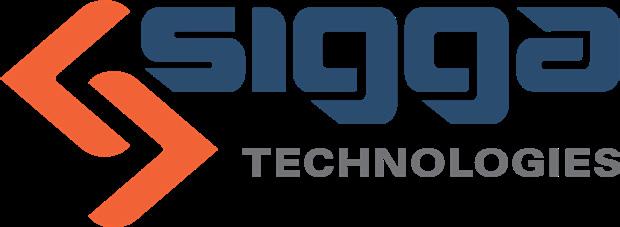




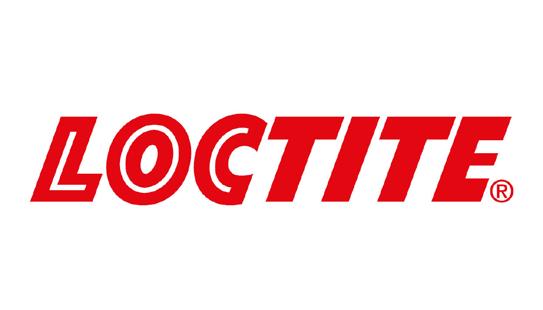
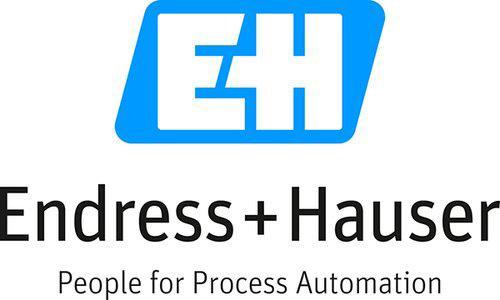




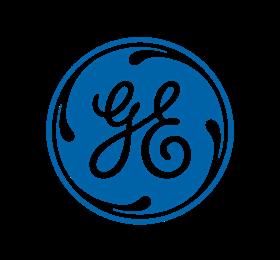



GOLD SILVER




05 Introduction A warm welcome from director Wim Vancauwenberghe 07 Schedule 2 days of learning, networking and discovering 10 Practical Application of Smart Maintenance at Takeda Interview with keynote speaker Giovanni Seggio 15 Asset Management in an Industry 5.0 World Interview with Jan Stoker 23 Highlights Featured cases 25 Conference programme A detailed schedule of all presentations 38 Exhibition Find your way in the exhibition hall 42 Proactive Water Leakage Detection with Sensors Interview with Filip Vancoillie 46 Asset Performance 4.0 Award Show Discover the contestants 54 Welcome to Antwerp The hosting city of the conference 55 Asset Performance continues online Download the app, re-watch online and listen to podcasts CONTENTS Colofon PUBLISHER: Wim Vancauwenberghe LAYOUT: Kim Panis BEMAS vzw-asbl Bd. A. Reyerslaan 80 1030 Brussels RPR Brussels Phone: +32 2 706 85 41 info@assetperformance.eu www.assetperformance.eu 8 AVEVA 19 SIGGA 51 IBM POWERED BY BRIDGE TO SUSTAINABLE ASSET PERFORMANCE Conference Magazine | 3

ASSET PERFORMANCE, ON THE BRINK OF INDUSTRY 5.0
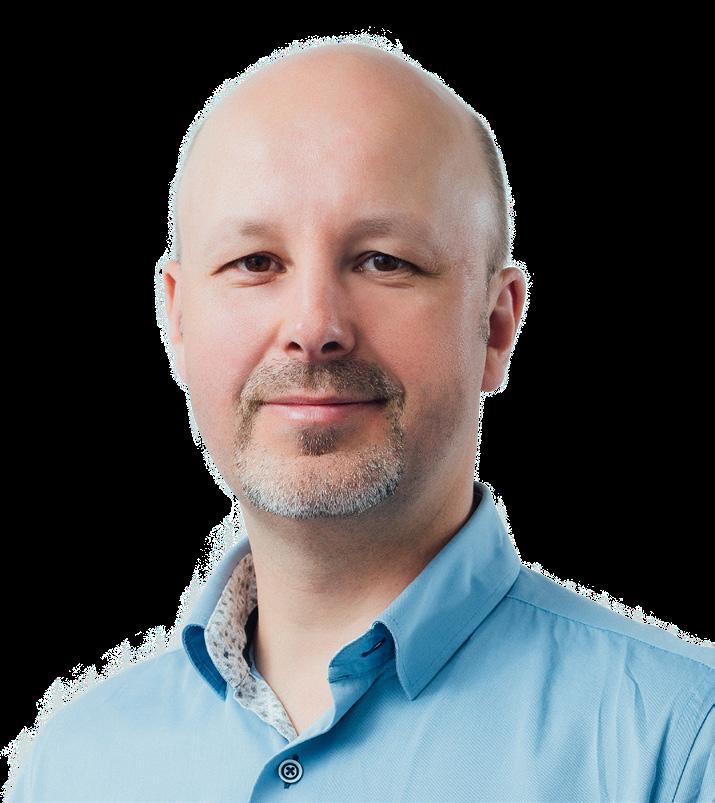
With the rapid digitisation of technical machinery and assets, particularly in the advent of Industry 5.0, it can be challenging for technical managers to grasp the full range of possibilities and potential benefits for organisations.
Recognizing this need, BEMAS, the Belgian non-profit organisation dedicated to maintenance and asset management, spearheaded the establishment of the international Asset Performance Conference in 2020, centred around digitisation and asset performance. We are delighted to host this year’s Asset Performance conference at the Flanders Meeting and Convention Center in Antwerp, a magnificent location situated at the heart of Europe’s chemical cluster.
Over the course of two inspiring days, this conference offers a plethora of learning opportunities for stakeholders from Europe and beyond. Our central theme revolves around disruptive technologies on the eve of Industry 5.0, while also emphasising the importance of fundamental concepts and best practices. During the Asset Performance Conference, you will not only gain insights into achieving higher reliability and cost performance of assets but also discover how to enhance resilience and sustainability through digital transformation and people-centric improvements in operations, maintenance, and asset management.
This event, being so much more than the typical maintenance conference, also brings you interactive workshops and captivating keynote presentations. Immerse yourself in the visionary thoughts of our keynote speakers from IoT Analytics and Takeda. Additionally, the extensive conference program features more than 20 industry cases, including presentations from renowned companies such as ZF Wind Power, La Lorraine Bakery Group, BASF, and many more.
We also highly encourage you to explore the exhibition floor, where our exhibitors showcase the latest innovations. It is an excellent opportunity to witness cutting-edge advancements in the field. Additionally, don’t miss out on our practical workshops, where industry experts will provide hands-on learning experiences, allowing you to gain valuable insights from the very best in the industry.
On Wednesday, October 25, 2023, we also host the prestigious Asset Performance 4.0 Award Show. Throughout the day, all nine candidates will showcase their cases, and in the evening, the winner will be announced by our esteemed jury. We conclude the first conference day with a walking dinner on the exhibition floor.
We eagerly anticipate your presence at the conference, and we hope you find this experience enlightening and rewarding.
WIM VANCAUWENBERGHE Conference Director
INTRODUCTION Conference Magazine | 5
CUT COSTS OR DRIVE GROWTH? YES.
DISCOVER THE INTELLIGENT PLATFORM FOR DIGITAL BUSINESS THAT LETS YOU DO BOTH.

Today, businesses are facing tough choices. But what if you didn’t have to choose? Our unifying platform lets you say YES to levelling silos that stand in the way of your people. YES to every person, system, and process working together harmoniously. YES to working with what you have, unlocking value in days and weeks, not months and years. YES to digital solutions that deliver the agility, scalability, and simplicity your business needs now — and for what’s next. Discover the many ways we can help you put YES to work. www.servicenow.com/yes
MEASURED VALUE + ADDED VALUE
You make confident decisions backed by process data and a complete portfolio of services and solutions to support you.
Customers around the world trust us when it comes to process automation. Our shared goal is plant safety, availability and efficiency. We are with you every day, everywhere.
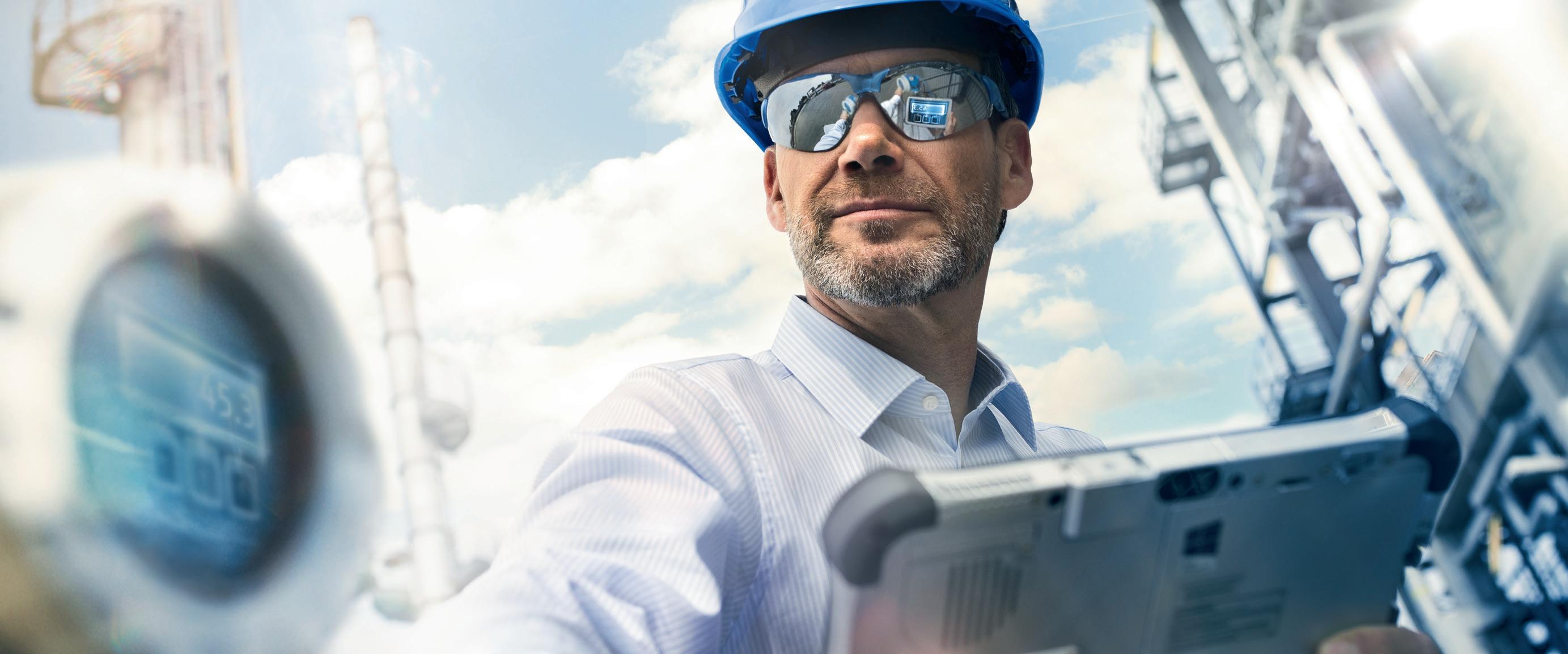
People for Process Automation
We understand you need insightful process information to help you run your plant efficiently. Do you want to learn more? www.be.endress.com
© 2023 ServiceNow Inc. All rights reserved.
SCHEDULE
2 DAYS OF LEARNING, NETWORKING AND DISCOVERING
TOPICS AT ASSET PERFORMANCE
WEDNESDAY 25 OCTOBER 2023


• Human-Centric Digital Transformation
• Condition Monitoring Techniques & Tools for Asset Health Assessment & Asset Degradation Prediction
• Asset Management 5.0
• Asset Performance 4.0 Award Presentations

THURSDAY 26 OCTOBER 2023
• Approaches & Implementation Methods for Reliability & Maintenance 5.0 Strategies
• Digital Twins
ESG & Sustainability Optimisation & Reporting
• Motor Systems in Industry 5.0
• Approaches & Implementation Methods for Predictive & Prescriptive Maintenance
• Artificial Intelligence Systems & Algorithms
• Smart & Sustainable Lubrication
• Energy Monitoring, Reporting & Optimisation
• Workshops
KEYNOTE PRESENTATION BY MCKINSEY 18:45
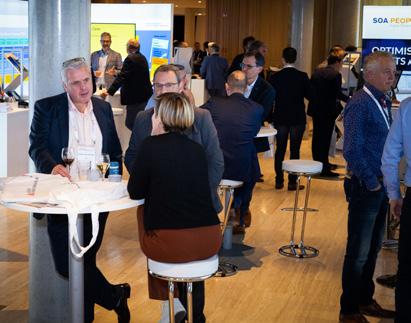
AWARD SHOW WITH ANNOUNCEMENT OF THE WINNER
Discover the candidates on p. 46! 19:30
WALKING DINNER
PRACTICAL INFORMATION
WEDNESDAY 25 OCTOBER THURSDAY 26 OCTOBER REGISTRATION 08:00 - 18:00 08:00 - 16:30 CONFERENCE 09:00 - 17:00 09:00 - 17:00 EXHIBITION 10:00 - 18:00 19:30 - 21:30 10:00 - 15:30 END OF EVENT 21:30 17:00
PERFORMANCE
SHOW
2023
RECEPTION
ASSET
4.0 AWARD
WEDNESDAY 25 OCTOBER
17:00
18:00
Conference Magazine | 7
Full programme schedule on p. 25 - 34 ©Dann ©Dann ©Dann
EMBRACING DIGITAL TWIN TECHNOLOGY
There’s a lot of talk about digital transformation and digital twin technology, but not everyone fully understands the benefits of implementing a digital twin. In this whitepaper, we’ll provide clear facts about a true digital twin and its advantages. No marketing hype, just the truth.
Challenges in a changing market
Industrial organisations must adapt their operating methods to tackle the numerous challenges in global markets. Instant access to a centralized hub of trustworthy real-time, asset, and engineering data empowers the right people to make informed decisions when needed.
How digital twin solutions provide certainty
Digital twin technology brings stability and predictability to engineering, maintenance, and operations teams. By aligning different disciplines around a single source of verified data, risks are minimised and detected early on. This eliminates wasted data sourcing and verification time and encourages collaboration.
For operations, maintenance, and engineering teams, comprehensive oversight of their data is crucial for achieving asset excellence, reducing emissions, and optimizing output.
The digital twin is a single hub connecting real-time trusted asset information from various data sources, enabling significant performance improvements:

• Driving asset excellence: While many industries have taken steps to digitize their operations, most platforms remain isolated and fail to address key barriers to performance improvement. A unified approach to information management is essential, connecting people, processes, and performance. Practical
digital twin solutions integrate all asset data, enabling easy access to relevant information in the context and format required for the task at hand. Whether searching for real-time data, maintenance information, 2D and 3D schematics, or user manuals, users can swiftly transition from a high-level overview to detailed insights with just a click.
• Minimising risks:
Unplanned maintenance downtime poses a significant risk in projects. Real-time access to data and analytics from various activities and a unified asset integrity management system reduce these risks. It improves planning, reduces wasted maintenance time and materials, and ensures effective scheduling.
ADVERTORIAL
© Aveva 8 | Conference Magazine
• Managing engineering information: Engineers often spend significant time searching for and verifying data, sometimes up to 50% of their working hours. Digital twin solutions provide easy access to accurate, up-to-date, and complete information, freeing engineers’ time to focus on strategic and value-adding tasks.

• Driving work efficiency: Successful digital twin projects require an evolution of project processes. Trying to fit old working methods into new technological applications will not unlock the full transformative potential. With the right approach and organisational mindset, a digital twin program can enhance internal processes and foster collaboration across engineering teams. This promotes data-driven decision-making, standardization, and transparency throughout the organisation.
• Fast response to change:
Real-time access to complete plant data and analytics enables organisations to manage change and respond to market dynamics more effectively. While optimizing asset excellence is an immediate benefit of digital twin technology, there are also long-term advantages in implementing solutions for existing assets. A digital twin can increase the potential sale value of assets and ensure compliance with decommissioning requirements.
• Supporting decommissioning: Decommissioning costs typically account for 3 to 4% of the total, often due to unforeseen issues with the asset or well. Digital twin technology reduces uncertainty by providing engineering teams with a complete picture of the asset, including flowlines, downhole tools, and a model of the existing facility. Armed with this information, engineers, in-house decommissioning teams, and external consultants can better plan and budget for the decommissioning program. Improved communication with regulators and engineers further streamlines the process.
Integration with prescriptive and predictive maintenance techniques and
DIGITAL TWIN TECHNOLOGY BRINGS STABILITY AND PREDICTABILITY TO ENGINEERING, MAINTENANCE, AND OPERATIONS TEAMS.
— ERIC VAN NISPEN Director of
the digital twin technology is a powerful approach that can transform maintenance practices, making them more proactive, efficient, and reliable. It allows organisations to move away from traditional reactive maintenance models toward a data-driven, predictive approach that ensures better asset performance and cost-effectiveness. Beyond prediction, digital twins can suggest specific actions or maintenance strategies to optimize asset performance and extend its lifespan. These recommendations are based on real-time data and the asset’s digital behavior, making the maintenance process more proactive and precise.
The critical factor distinguishing different approaches of any digital twin, is how easily the various technology components can be unified to synchronize real-time, asset, maintenance, and 1D, 2D, and 3D data into a single, secure hub.
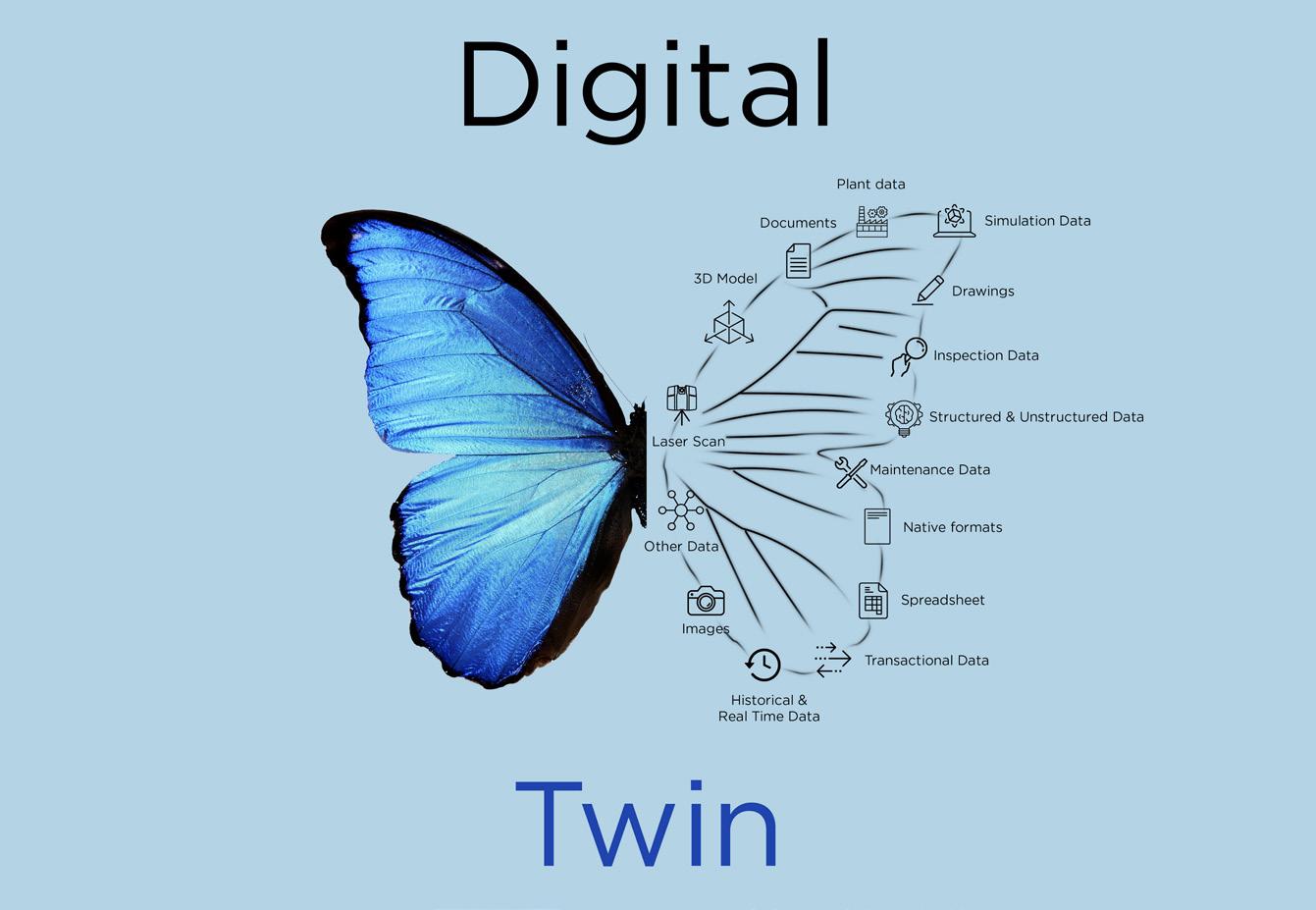
For further information on implementing a true Digital Twin encompassing various data sources, including real-time, maintenance, and engineering data, we invite you to contact AVEVA Select Benelux. Our team is dedicated to assisting you in your digital transformation journey, helping you achieve operational excellence by adopting a robust Digital Twin solution. ■
Visit Aveva Select Benelux at booth C3 - D3
Continue reading:

“
Eight Lakes Software Solutions at AVEVA Select Benelux
ADVERTORIAL Conference Magazine | 9
© Aveva
PRACTICAL APPLICATION OF SMART MAINTENANCE AT TAKEDA
A better health and a brighter future for everybody. Takeda makes it happen and has been doing so for more than 240 years. The result of an innovative and sustainable approach. The pharmaceutical industry is heavily regulated, which makes maintenance no easy task. However – with the right vision, approach and tools, anything is possible. This is demonstrated by the Maintenance Team of the Lessines site.
Takeda is one of the largest pharmaceutical companies in the world. Pioneer in the development of new treatments and therapies in several therapeutic areas, including gastrointestinal and inflammation, rare diseases, plasma-derived therapies, oncology, neuroscience and vaccines. Always putting the patient first, always creating added value for society.
Factory of the Future
Today, we take a look at the biotechnological production site in Lessines, specialized in manufacturing plasma-derived therapies for people with rare and complex chronic diseases. Takeda Lessines won the ‘Technical Team of the Year Award’ in
Wallonia, a well-deserved recognition for their maintenance management practices and results. Head of Maintenance Giovanni Seggio is one of the keynote speakers at the Asset Performance Conference, where he will share concrete examples of Smart Maintenance. We already had the opportunity to interview him and gain some valuable insights.

Teamwork x Technology
Giovanni Seggio: “Our manufacturing site in Lessines employs over 1,200 people. We are a Centre of Excellence for the purification of immunoglobulins, with filling and packaging capacity for plasma-derived therapies, and packaging capacity for hematology products serving more than
250,000 patients in over 80 countries. With such a significant responsibility, ensuring the continuity of our production is of utmost importance, alongside ensuring the highest standards of quality and safety. Production runs 24/7, 365 days a year, making cost-effectiveness and efficiency essential focal points. It’s a delicate balance of reducing one while maximizing the other. Effective monitoring is the key, and technology plays a vital role in achieving this. Additionally, our drive to continuously improve and share knowledge with the world has been the driving force behind our participation in the Award and now the Conference. We have a lot to showcase, and hard work is continuously put in at our site.”
INTERVIEW
10 | Conference Magazine
© Takeda
Asset Investment Management Program
The mix of human work and technology works. “Real teamwork allows the Maintenance Department to meet the challenge of managing a growing number of installations which increased fivefold between 2016 and 2022. Operational performance was also improved, with a drastic reduction in emergency interventions and 99% on-time operations. All this thanks to our collective approach to maintenance, based on priority setting”, says Giovanni Seggio.
Meanwhile, the Maintenance Team has visibility into all costs and assets. Behind it lies a robust Asset Investment Management Program, supported by measurement and analysis techniques for evaluating asset health status. But there is more, such as a modern vision.
After all, what is a program without vision?
AI and everybody is on board
A modern vision is focused on the future. At Takeda, it is inseparably linked to Artificial Intelligence (AI), the next step in their digitisation process. This ensures equipment monitoring through data, simultaneously and permanently, as a part of Smart Maintenance. Interventions, assets, and costs are fully balanced and under control. The Lessines site serves as a pilot project, and its success will pave the way for further implementation within the Takeda group.
Giovanni Seggio emphasizes: “Data are essential, but our people are equally crucial. We have a wealth of expertise among our colleagues, and it is through

contextualization that we can optimize our maintenance processes using data. This principle applies to all departments. We provide training for our employees; everyone is on board. We believe in giving our people the opportunity to embrace digitisation and find harmony, ensuring AI is used correctly. Our digital transformation is in full swing, and our digital playground keeps expanding. Moreover, we look outward to external researchers, start-ups, and our ecosystem to continue innovating. We are committed to sharing our expertise.”
Sustainable Smart Maintenance
So, Smart Maintenance with AI, always infused with a sustainable touch. “We constantly question the sustainability of our maintenance approach – it’s ingrained in our DNA. Our efforts are definitely being appreciated. The International
Society for Pharmaceutical Engineering has granted the 2023 Facility of the Year Awards (FOYA) to Takeda in the Social Impact category. We were recognized for accelerating a shift to sustainable facility design, aimed at ensuring the effective use of energy, minimising waste, reducing carbon footprint, incorporating
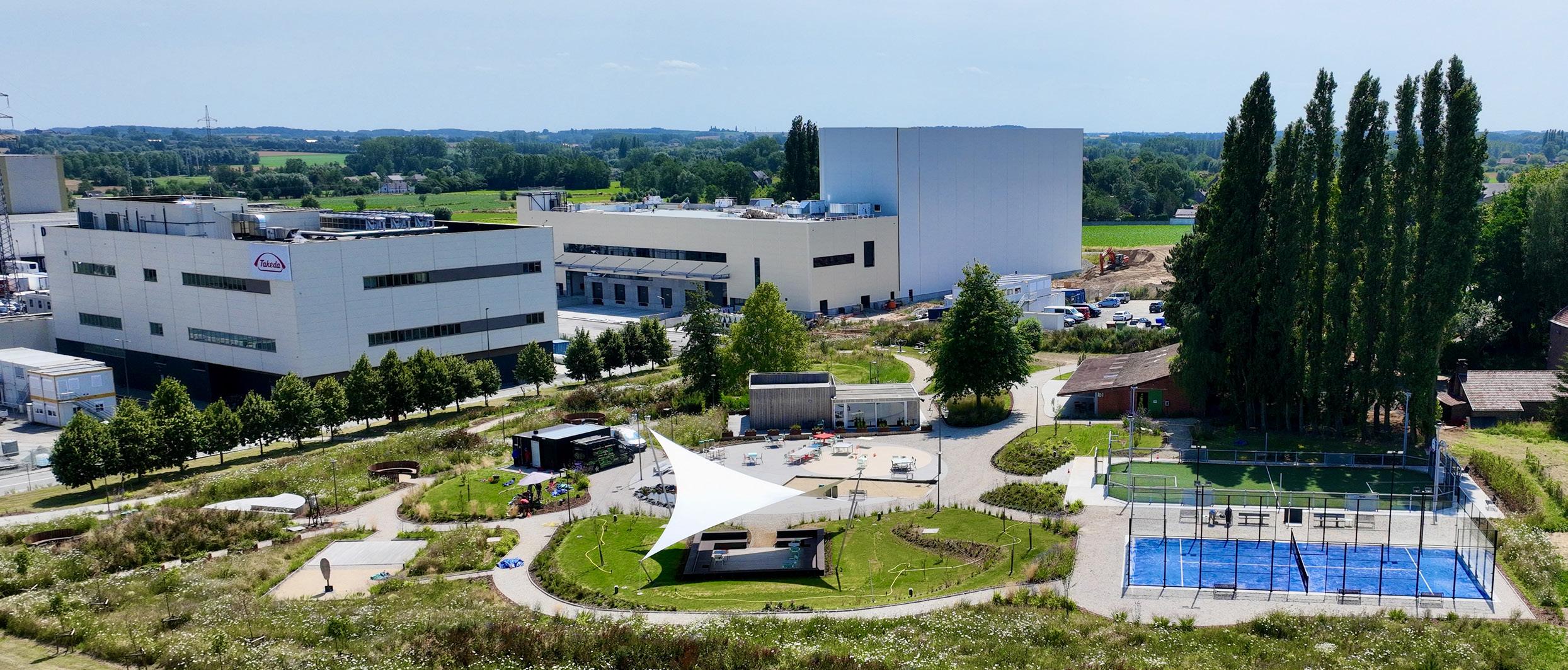
JOIN THIS SESSION
Keynote: PRACTICAL APPLICATION OF SMART MAINTENANCE AT TAKEDA
Wednesday 25 October 2023 at 9:30
Queen Elisabeth Hall
DIGITAL DATA ARE ESSENTIAL, BUT OUR PEOPLE ARE EQUALLY CRUCIAL.
— GIOVANNI SEGGIO Head of Maintenance, Takeda Lessines
“
© Takeda
Conference Magazine | 11
© Takeda
green manufacturing techniques and reducing the environmental impact at our plasma-derived therapies production site in Lessines. We are one of the most advanced sites with regard to digitalisation and the reduction of environmental impact of manufacturing operations. We were the first in the global Takeda manufacturing network to pioneer a waste water treatment system enabling us to
reduce our freshwater consumption by 50 percent, a reduction of 1 million litres per day for the whole site”, concludes Giovanni Seggio.
A game-changer for sure. The Takeda approach is also inspiring for other Asset Performance Teams. Come and see for yourself during the Asset Performance Conference. ■

Continue reading:
5 TRAPS TO AVOID WHEN SELECTING ASSET PERFORMANCE MANAGEMENT SOFTWARE
The market is saturated with software that promises to improve asset performance and reduce or eliminate downtime. Whether it brands itself as asset performance management, predictive maintenance, reliability centered maintenance or condition-based maintenance software, all seem indistinguishable from each other.
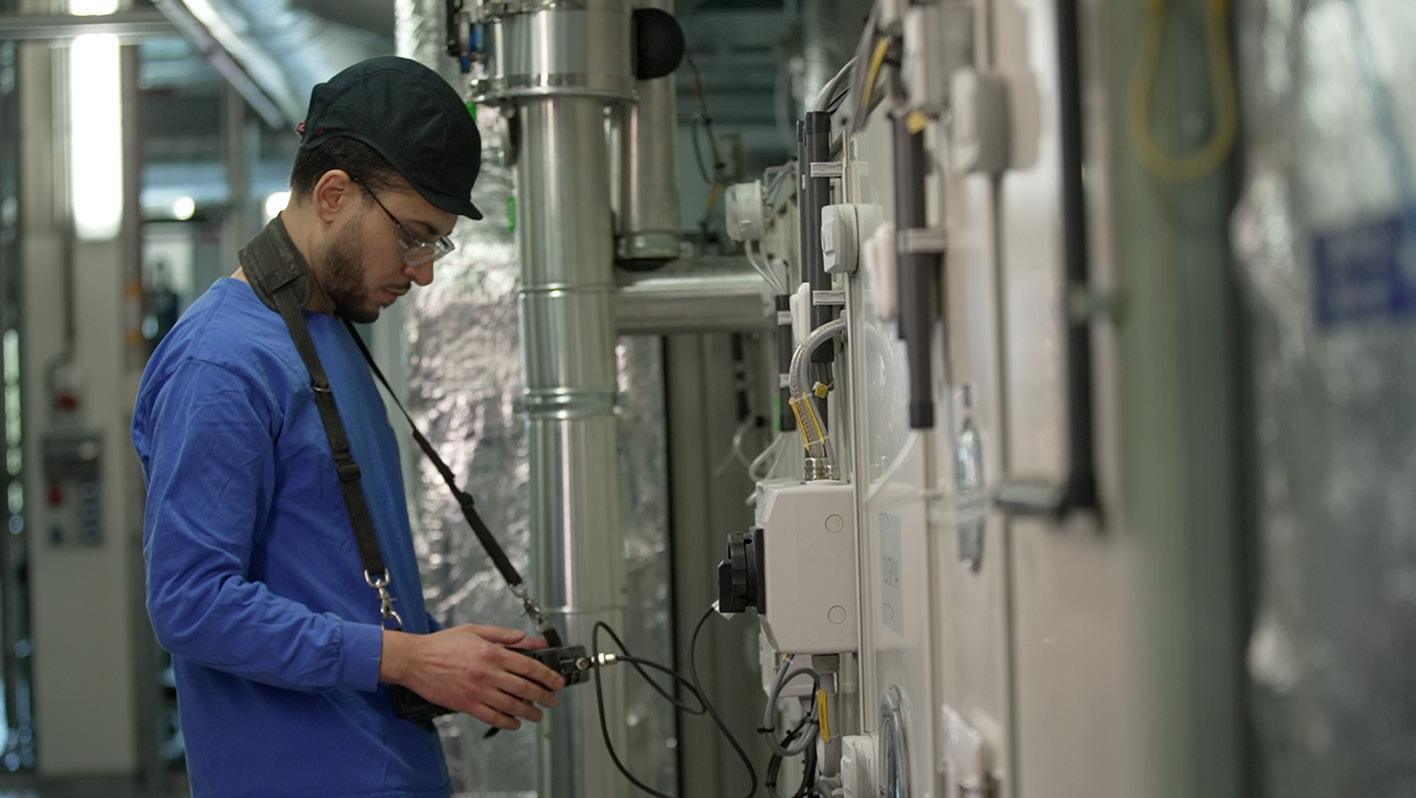
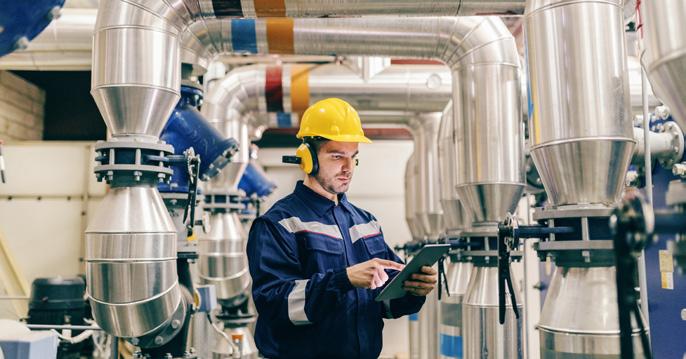
But they are not. Behind the claims are deal-breaking differences that separate true operational intelligence (APM) solutions from those that come short of expectations.
The key is knowing when claims are misleading or downright untrue. Here are five “red flag” statements you may have heard.
1. The Full Value of APM Software Is in Alerting You To Potential Asset Failures | FALSE
2. You Have To Start Building Math Models From Scratch To Detect Real-time Asset Anomalies | FALSE
3. It’s Hard to Prioritize Issues Based on Financial Impact | FALSE
4. You Will Need a Team of Data Scientists To Implement Your APM Solution | FALSE
5. It Will Take Several Months, or Even Years, To Create and Implement a Solution for Your Complex Operations | FALSE
What you need from an APM solution is very straightforward. Your solution should be able to easily connect to existing data sources, detect both emerging performance and reliability issues, diagnose potential root causes, and provide a collaborative environment to resolve issues to improve performance and stop downtime from draining your bottom line.
Find out how we offer all this and more to our customers at www.prometheusgroup.com. ■


Visit Prometheus Group at booth F6
Continue reading:

INTERVIEW
© Takeda
12 | Conference Magazine
© Prometheus
HENKEL CREATES ADDED VALUE FOR ITS CUSTOMERS WITH THE DIGITAL LOCTITE PULSE SOLUTIONS

In October 2021, Henkel Adhesive Technologies, a global leader in adhesives, sealants and functional coatings, introduced LOCTITE Pulse, an Industrial Internet-of-Things (IoT) solution that contributes to the reliability of critical assets. Once installed in your critical assets, LOCTITE Pulse sensors continuously collect data and provide valuable insights into asset health.
LOCTITE Pulse has been designed for the monitoring of assets, supporting the current needs of industrial maintenance: efficient operations, increasing uptime, saving energy losses, and thus reducing the CO2 footprint. The new solution offers smart technology to increase the efficiency, safety and sustainability of industrial sites while saving costs and resources.
LOCTITE Pulse Smart Steam Trap is an innovative solution that monitors the health of steam traps and supports the prediction of critical failures. With a set of easy-to-install nano sensors applied at the inlet and outlet of the steam trap, the solution continuously gathers information about the status of the equipment. Using highly sensitive sensors and intelligent analytics, LOCTITE Pulse can detect malfunctions at a very early stage and help predict and prevent energy losses
and damage to the plant. The operator receives information about changes in the steam trap’s status via the easy-to-use LOCTITE Pulse app, allowing them to act rather than react.
detection of early leakages, and reduces the risk of serious incidents. In future, Henkel aims to launch further solutions for the smart monitoring of a broad variety of critical assets across industries, all managed via one single LOCTITE Pulse app.


LOCTITE Pulse awarded with BEMAS’ Digital Innovation Award
During the MAINTENANCE 2023 trade fair, BEMAS, the Belgian Maintenance Association, awarded Henkel for its LOCTITE Pulse solutions with the Digital Innovation Award. According to the jury, reasons for selecting Henkel were amongst others the high degree of innovation and the outstanding potential to further expand the solution portfolio in the future.
In addition to LOCTITE Pulse Smart Steam Trap, the growing LOCTITE Pulse portfolio includes the Smart Flange, which helps monitor critical flanges, supports the
“What convinced us first and foremost was the particularly broad applicability,” says jury chairman Jos Vankevelaer. “Where other applications focus primarily on rotating equipment, LOCTITE Pulse focuses primarily on static equipment.” ■
Find more details about the smart maintenance solutions at:
Continue reading:

OUR VISION: ONE HOLISTIC SOLUTION TO MONITOR YOUR CRITICAL ASSETS.
“
— HENKEL ADHESIVE TECHNOLOGIES
www.LOCTITE-pulse.com Visit Henkel at booth F4
ADVERTORIAL
© Henkel
Conference Magazine | 13
© Henkel
SMART GASKETS: DRIVING DIGITALISATION IN THE GASKET INDUSTRY
Ben Cloostermans, R&D engineer at ERIKS, is conducting pioneering research to find a solution to a fundamental challenge in the gasket industry: ensuring the solid assembly of gaskets to prevent leaks during the installation phase and long-term control of flange connections. The performance of gaskets is often based on calculations full of assumptions and uncertain variables, which in complex installations (e.g. with heat exchangers or pressure vessels) with small margins for error creates quite a risk of leakage. Ben’s research resulted in an innovative solution: Smart Gaskets,
a technology that measures and controls the performance of gaskets directly in the gasket itself. The result of a collaboration between ERIKS and Brussels Photonics (B-PHOT), the Photonics Research and Innovation Centre of the Vrije Universiteit Brussel!

Detect leaks early, verify seal installation, reduce emissions? Triple check! Smart Gaskets excel in proactivity, safety and durability.
A gasket is only a few millimetres thick, and integrating sensors is no mean feat. The solution? Optical fibre sensors perform strain measurements, determining the pressure on the surface of the gasket with the aim of monitoring the condition of the gasket in real time. The result? Optimal gasket assembly and leak-free start-up, and controlled and more predictable maintenance of the flange connection. The research is currently at Technology Readiness Level (TRL) 4 to 5: the laboratory tests have been successfully
completed, and we are starting practical application through a pilot project with an early adopter customer of ERIKS. In the short term, we will deploy Smart Gaskets for validation measurements at customers’ premises; in the long term, we will lift the concept to TRL 9 and equip gaskets with sensors that are automatically read in the customer’s dashboard. ERIKS is pursuing the standards of industry 4.0 and IoT. The requests and compliments we received following our presentation at the ASME conference already underline the innovative nature of our solution. ■
More info? www.eriks.be
Visit ERIKS at booth E1 and F5

Continue reading:
INTRODUCING EMIXA: PIONEERING DIGITAL TRANSFORMATION THROUGH SYNERGY
Emixa, a dynamic consortium formed by five prominent companies –Appronto, cards PLM Solutions, Dimensys, Magnus Digital, and OnePLM –heralds a new era in digital transformation. With a strong emphasis on the manufacturing sector, also known as ‘Industry 4.0’, Emixa harnesses the combined power of Siemens, Mendix, and SAP technologies.
What sets Emixa apart is its unique ability to seamlessly integrate Siemens/Mendix/ SAP technology solutions, offering clients a one-stop shop for digital transformation. Focusing on specific industries enables Emixa to stay ahead of trends and add substantial value to businesses within those sectors.
Backed by investor Holland Capital, Emixa is poised for strategic growth through a buyand-build approach. With a collective team of 420 experts, the consortium tackles a diverse range of challenges including process optimization, asset management, low-code applications, and data analytics.
As Emixa aims to ascend as a leading player in Western Europe, each member company retains its identity while expanding digital transformation services. These services cater to a variety of sectors such as manufacturing, retail, logistics, finance, and education.
Dimensys - With roots dating back to 2000, Dimensys pioneers operational excellence, particularly in asset and product lifecycle management. As a certified SAP Gold Partner, it plays a pivotal role in streamlining business processes.
Appronto - Established in 2013 in Breda, Appronto specializes in Mendix-driven low-code solutions and seamless system integrations. Notably, it holds the distinction of being the first European Siemens Smart Expert Partner.
Cards PLM Solutions - Originating in 1999, cards PLM Solutions excels in digitizing business processes within the



manufacturing sector. As a Siemens Platinum Expert Partner, it extends its services to industries including automotive, aerospace, and medical devices.
Magnus Digital - A pioneer since 1990 in SAP and Mendix collaborations, Magnus Digital offers an array of digital services, effectively mitigating management burdens for clients while fortifying their digital landscape.
OnePLM - OnePLM, a foremost Siemens Digital Industries Software Partner, boasts an extensive 25-year industry tenure. Catering to the UK and Ireland, it provides comprehensive PLM services, training, and consultancy services ■
Visit DIMENSYS at booth B1
Continue reading:
ADVERTORIAL © Eriks
14 | Conference Magazine
ASSET MANAGEMENT IN AN INDUSTRY 5.0 WORLD
HUMAN CENTRICITY, RESILIENCE & SUSTAINABILITY
It is hard to imagine 21st-century Asset Management without data or, for that matter, without people. There is so much to be said about the interaction between them and about how human centricity, resilience, and sustainability enter into the equation. One thing is clear: an incredibly fascinating evolution is taking place, and it is definitely in your best interest to get on board. Jan Stoker, expert on this topic, sets the tone.
Jan breathes Asset & Maintenance Management. Starting out as a Maintenance Technician, he has made a career through various roles in the corporate world and as a Teacher/ Researcher in Asset & Maintenance Management. He is currently engaged as a Senior Asset Manager at Rijkswaterstaat West-Nederland Noord (WNN), also holds the position of Chair ETC-EFNM and Visiting Fellow/Senior lecturer and Researcher at Cranfield University. He is a product of the Excel generation but has always been in search of more efficient ways to process technical information.
Through his research and teaching programmes, he has continually developed himself, surrounded by inspiring professionals and NextGen’s. Ready to tackle
the challenges and opportunities of this complex timeframe.
Industry 5.0, 4.0 enabler
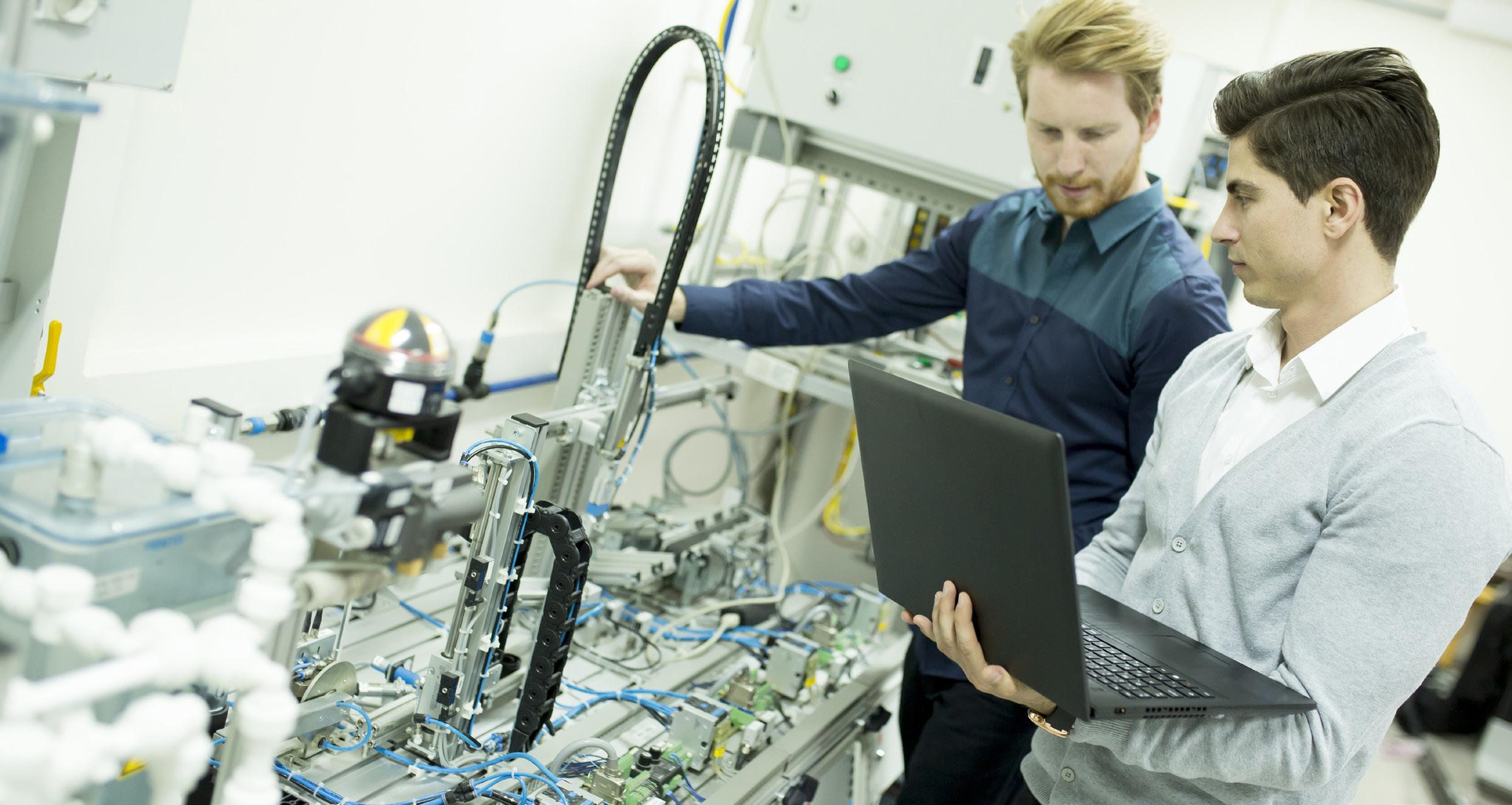
Talking about the timeframe, Jan Stoker is clear: “We are moving into a fascinating era of digital transition. A lot is happening, sparked by Artificial Intelligence (A.I) and as example Generative ChatGPT as a catalyst for ideas. I greatly admire the twenty-somethings who can quickly pick up codes from the internet and build impressive technology. This brings me to Industry 5.0, the enabler of Industry 4.0, which is focused on information transition, extracting data from assets. This is in fact increasingly being achieved. Now, what can you do with all this data? That is where with an Asset Management
BE AWARE: WE ARE ALREADY IN THE 5TH INDUSTRIAL REVOLUTION. — JAN STOKER
Sr. Lecturer & Researcher at SSAMM
“ © Shutterstock Conference Magazine | 15
perspective Industry 5.0 comes into play. It aims to boost Industry 4.0 with a focus on humans. The methods remain the same, but the quality will be better.”
Be aware: we are already in the 5th Industrial Revolution. Even though Industry 5.0 is a relatively new concept, some early academic writing describing the main features of this notion already exists. An analysis of Industry 5.0 literature shows a lot of uncertainty about

what it will bring and how exactly it will disrupt business, as well as about how it will potentially break down barriers between the real and the virtual world. Based on a literature review and our forward-looking analysis, Industry 5.0 will be defined by a re-found and widened purposefulness, going beyond producing goods and services for profit. This wider purpose constitutes 3 core elements. You will receive all the details during the conference:
1. Human-centricity – digitisation and innovation centred around humans.
2. Sustainability – contributing to a more sustainable world through Asset & Maintenance Management.

3. Resilience – the industry needs resilience to respond to all challenges.
How does this translate into Asset & Maintenance Management? It involves incorporating theory into your processes, applying it while keeping humans in control. The human as an asset. Now, at the end of Industry 4.0, it is time to reconsider the role of the human factor, resilience and sustainability in an increasingly smart technological environment.
Rijkswaterstaat in transition
At Rijkswaterstaat, Jan stoker feels the daily challenges. The organisation is facing the huge task of maintaining and replacing assets. The civil infrastructure in the Netherlands is worth more than €300 million. However, this infrastructure is aging. More and heavier trucks than initially anticipated are driving on our roads. How long can our bridges, viaducts, locks,
© SSAMM
JAN STOKER Sr. Lecturer & Researcher at SSAMM
INTERVIEW
“
SIX PROCESS STEPS ARE INVOLVED IN THE PROCESS: POLICY AND STRATEGY, MANAGEMENT AND PROGRAMMING, PLANNING AND PREPARATION, CONSTRUCTION AND MAINTENANCE, MONITORING AND ANALYSIS, EVALUATION AND ADJUSTMENT.
© Shutterstock
16 | Conference Magazine
dams, and quays last? Jan’s contribution to the Asset Management implementation plan consists of structuring the ‘Bridges & Structures’ and ‘Tunnels’ chains in terms of both data & information and people & organisation. Six process steps are involved in the process: policy and strategy, management and programming, planning and preparation, construction and maintenance, monitoring and analysis, evaluation and adjustment.
Jan Stoker: “The focal point is to work together with the Maintenance Engineers to identify the P-IHPs (Preventive Maintenance Plans) and FME(C)As (Failure Modes, Effects & Criticality Analysis) of the most essential assets in order to quantify risks and develop maintenance concepts, maintenance plans and replacement investments. Rijkswaterstaat is in full transition. Like the rest of the world, we are embracing the use of data. And I
believe that Industry 5.0 will be valuable in the long run.”

Passion never fails
All this is becoming more and more fascinating for future Asset & Maintenance Managers, Technicians and Engineers. The timeframe is full of choices to be made, if we want to create a sustainable future. “It encourages me to overthink and discuss how to educate, train and motivate today’s professionals and how to prepare NextGen’s in this complex timeframe. The Asset Performance Conference is the place to be if you want to learn more about this or share thoughts and ideas. See you there,” says Jan Stoker.

Wednesday 25 October 2023 at 11:00
Continue reading:
JOIN THIS SESSION ASSET MANAGEMENT AMIDST INDUSTRY
5.0
Gorilla 1
■
INTERVIEW Zoomst r aat 10 9160 l o ker en ww w avk v al v es .be +32 (0)9 348 13 13 | |
Expert in valves
THE IMPORTANCE OF ASSET AND FLEET OPTIMISATION FOR POWER GENERATORS
diversity of fleet assets is growing, too – renewables, storage and hybrids are creating a dramatic shift in status quo.
The Digital Solution
Leaders in the energy sector are exploring how digital technology can create intelligent and autonomous fleet operations to optimise daily generation, manage risk, improve margins and operate from anywhere.

Power generation companies are at the center of mounting demands from governments, the private sector, and consumers to transition from reliance on fossil fuels towards a decarbonized world. Utilities and power generators are rapidly seeking greater levels of decarbonization and energy flexibility by investing in solar, wind, storage, hybrid and decentralized energy systems. The
Yet, even as the cost of renewable energy comes down, utilities and independent power producers (IPPs) are under intensifying economic pressure to improve their balance sheet, increase revenue, and drive cost-out. They’re being charged with managing operations to maintain reliability and improve profitability, while responding to dynamic, variable and uncertain market conditions through the transition.
SIMPLIFYING CONDITION MONITORING OF BALANCE OF PLANT EQUIPMENT
Knowing the health of your important assets is critical to achieving production and business goals. Colin Burg, senior account manager for reliability solutions at Emerson, explains how edge analytics devices are helping to simplify the implementation of online monitoring systems.
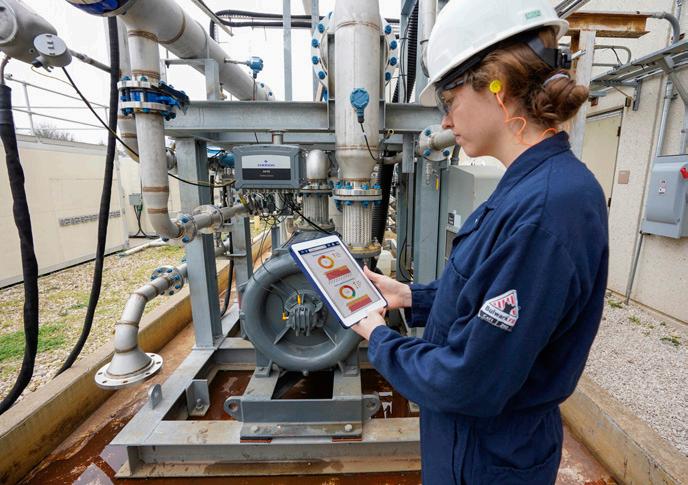
Online condition monitoring systems have been around for many years now, typically applied to the most critical assets within a plant, such as compressors and turbines, and often combined with protection systems that bring equipment to a safe position. In general, for applications relating to balance of plant equipment, such as pumps, fans and motors, and other assets less critical, this technology has been deemed too complex and expensive; however, these `less critical’ assets may still be important to efficiency of the manufacturing process.
Traditionally, the condition monitoring of balance of plant equipment such as
pumps, motors and fans, has relied heavily on manually collected vibration measurements, which may be performed as infrequently as once per month. Taking such occasional snapshots of equipment health is not ideal, as it provides the opportunity for issues to occur in between readings that could cause damage or even unexpected failures. In addition, the task, which involves a maintenance technician collecting data from each piece of equipment using a handheld device, can take several days and often results in spending time on healthy machines. With maintenance resources often stretched, and recent restrictions around access and availability to site this can be a very inefficient use of time.
Integrate control room, commercial ops, commitment and dispatch optimisation, with a focus on:
• Asset to fleet optimisation


• Specialized analytics to handle market and operational uncertainty
• Technology to handle complexity and speed while enabling secure, autonomous operations edge-to-cloud and cloud-to-edge ■
Visit GE at booth A5

Continue reading:
© Emerson
Although visual inspections should form a part of your maintenance regime there would be significant business benefits if all important plant assets had a level of online monitoring deployed, helping to reduce the need for manual readings, improving the efficiency of maintenance teams and increasing overall equipment uptime and performance. ■
Visit Emerson at booth C5
Continue reading:

ADVERTORIAL
©
GE
18 | Conference Magazine
HUMAN-CENTRIC DIGITAL TRANSFORMATION
Digital transformation is a continuous process which companies use to drive fundamental change in their businesses by leveraging new, digital technologies. Moving from traditional paper-based and time-consuming processes to digital and mobile creates multiple benefits. Companies and their workers see immediate increased efficiency, improved operational agility, and overall greater competitive advantage. This delivers enhanced value to employees, customers, and shareholders.
Put more simply, digital transformation advances a company into the digital age. By using digital technology across a manufacturing business, people at all levels of the organisation reimagine the old ways of working, favoring new methods and processes that are agile, efficient innovative, and dependent upon data. Often, these activities mirror.
Yet, according to McKinsey, 70 percent of digital transformation efforts fail. A major contributor to this failure? A lack of change management.
The fact is digital technologies cannot transform an organisation – especially in the slow-to-change manufacturing industry – without the commitment to transform by people.
People are at the center of digital transformation
Just as the majority of companies undertaking change swung the digital transformation pendulum too far in the direction of
a technology focus, they cannot swing it back too far in favor of people, neglecting technology. In the end, humans have to connect to technology, and technology has to connect to the human.
gradual. Ensuring that you don’t ‘boil the ocean’ allows people to innovate in a safe manner that minimises risk. In most cases, your transformation only needs to stay a bit ahead of the competition to deliver the advantages you seek. But the benefits rest on a foundation built out of people’s capabilities, mindsets, and a clear strategy to integrate both.
Digital transformation does not work without planning and communicating
— TY LEVINE
Vice President Global Marketing
Still, manufacturing company leaders must recognize that it is people who form the foundation for digital transformation. That’s because digital technologies are not adopted in a vacuum. Instead, your most seasoned employees – those with deep subject matter expertise and experience – are invaluable to contributing insights applicable to the process of learning and unlearning, experimenting, and adopting new ways to work in the atmosphere of continuous improvement.
As your organisation adopts new processes and methods enabled by technology, it’s important to remember that change is

Employees resistance to change is a major challenge to any digital transformation effort. Many people who lack familiarity with digital tools feel apprehensive about several factors: their ability to adapt, the seemingly foreign descriptions of digital tools, a general fear of the unknown, and how new processes could possibly design them out of a job. For older employees, the fear is even more poignant. They tend to get frustrated more easily and find it more difficult to undo their hard-wired ways of working over a period that could be as long as 30-50 years.
Every digital transformation program or initiative should follow a well-communicated plan that incorporates four elements:
1. Vision
2. Goals
3. Needs Assessment
4. Road Map
Set the vision
It goes without saying that the vision for your digital transformation must come
HOW TECHNOLOGY AND PEOPLE COMBINE TO CLOSE THE LOOP
THE FACT IS DIGITAL TECHNOLOGIES CANNOT TRANSFORM AN ORGANISATION WITHOUT THE COMMITMENT TO TRANSFORM BY PEOPLE.
“
© Sigga
Conference Magazine | 19
from the executive level, someone with the power to take ownership and step in when resistance or problems arise. The vision should appear in clear, concise statements: What we plan to do; Why we’re doing it; How it will help us to meet our overall objective(s); What the improved state will look like.
Notice I say, “the improved state” and not “the end state.” Digital transformations do not have an end state. They are ever-evolving efforts that drive ongoing improvements to continually make the company better.

Establish goals
Having specific goals established before you begin enables you to know if your transformative efforts are having an impact on the business. For example, a plant maintenance team may set a goal of increasing machine uptime by one percent per month for six consecutive months. Or, the field services team may establish a goal of improving work order accuracy by a certain percentage by a specified date. Whatever the goals are, they should be both aspirational and realistic so that people can strive to achieve them.
Assess end-user needs

The impact on end users must be closely monitored in any digital transformation effort. For example, if you have set a goal to document every interaction with your vendors in electronic form, you need to meet with people at all levels of your organisation to agree how you can implement such a change and make it succeed. If your method of implementation has poor usability, people will not adopt it, or they will quickly grow unhappy. Generally, people cannot predict the
cascading effects of process changes. You will want to incorporate a feedback loop as well as ongoing discussions to ensure the newly implemented solutions works for everyone. This will ensure end-user buy-in much better than dictating the change.
Create a road map
Your road map should answer the question, “How is that going to work?” The road map does not have to be a sophisticated and complex diagram of everything you plan to do. It can be a simple visual that shows when each initiative is planned to start and how each aligns to the goals you have already established. Not only does the road map introduce accountability, but it also helps people understand priorities and progress toward those priorities.
The importance of upfront change management
As noted above, employees are often resistant to change, and that puts digital transformation programs at risk of failure. Yet, time and again, digital transformation efforts do succeed when company leaders work with internal communications experts to provide consistent messaging to employees that reassure them that all is going well and will impact them positively. Avoiding troublesome or worried employees will not make the challenge go away. In fact, that type of strategy only worsens the divide between those doing and those resisting.
In many companies, emphasizing that digital transformation provides employees with the opportunity to improve their skills for the future can be a motivator. However, that is not the case within many manufacturing businesses. Drilling down into an area such as plant maintenance,
where there is an aging workforce well beyond the national average, these elder workers have little interest in building skills for the future. They are quite comfortable with the way things are.
An alternative strategy to bringing along these employees involves explaining to them in advance how the digital transformation will make their day-to-day work life easier, more efficient, and eventually, nearly hassle-free. Simultaneously, your digital transformation leads should explore areas where highly seasoned employees can take charge of the transformation areas that might uniquely interest them the most. For younger employees, this sounds much like personal development. For older workers, it could be a legacy and their own way of fending off a feeling of being obsolete. Change should not be feared. It is an opportunity to turn information into institutional knowledge.
The point is that you must engage the older employees within a manufacturing business. They are the operational lifeblood of today’s company. As Chad Moutray of the Manufacturing Institute’s Center for Manufacturing and chief economist for NAM recently stated, “The simple fact is that companies are very concerned about losing their top talent to retirement and are finding creative ways to keep them longer and to train younger workers.” ■
Visit Sigga at booth D5
Continue reading:

ADVERTORIAL
20 | Conference Magazine
© Sigga
EXPERTISE FOR YOUR PROJECTS: MATCH THE RESOURCE TO THE NEED
There’s no denying that companies with industrial assets, regardless of business model or sector, are still suffering from a labor shortage This is a growing problem around the globe. Despite a brief respite in May 2022, when U.S. job openings decreased to 11.3 million on the last business day, the hard reality is that more workers are retiring or resigning than are joining the labor force
The situat ion isn’t much better in Europe, either. In 2019, one study found that 39% of manufacturing firms reported their production was being limited by labor shortages and the situation has not abated In the UK, manufacturing job vacancies are 30% higher than their pre-pandemic peak, per a 2021 Deloitte study. Another report found that British manufacturers are experiencing the worst skilled labor shortage i n more than 30 years A McKinsey “future of work” analysis predicts that by 2030, the EU will have lost more than 13.5 million working-age people. Exacerbating the issue, many firms lack the resources or knowledge to vet and hire the right people In the meantime, senior-level engineers are being asked to perform the work of junior people, frustrating them and potentially accelerating their retirement pl ans. Realistically, they want to help their employers, but they also want to perform the work they were hired to do
Acceleration of retirement among senior workers makes the problem even worse than one might assume. Why? Senior workers possess “tribal knowledge” and historical perspectives that younger, more inexperienced staff do not
ADDRESSING THE KNOWLEDGE DEFICIT: OUTSIDE TRAINING FOR MAINTENANCE WORKERS

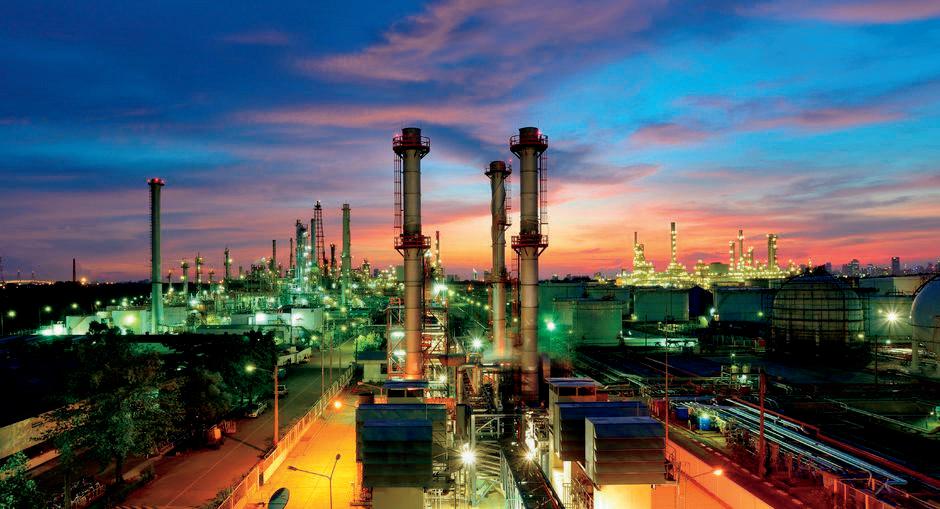

Often, the most logical solution may seem to be training and upskilling younger workers This is great in theory, but the only staff who are experienced enough to train and upskill others are often senior workers. That just makes the situation more difficult. Fortunately, there is hope. One approach that can deliver significant value i nvolves letting experienced staff act as mentors They will gain a sense of purpose by sharing their knowledge and skills with younger workers/apprentices, and the facility’s capabilities will be increased.
Another approach is to allocate resources for outside training Firms who go this route must confirm the training is recognized by respected entities such as Technical Associates of Charlotte
ADVERTORIAL
In essence, it is far more effective for senior staff to spend time training junior and intermediate-level maintenance technicians rather than to perform the work themselves Not only is this less frustrating for the senior person, but it also creates an environment of “mentorship ” Senior (and often intermediate) personnel can share best practices and life/wor k experiences that inform the younger workers’ knowledge base.
DELIVERING EXPERTISE TO CUSTOMERS
Another area where resource matching is vital is when a company seeks referrals of possible technician hires from a vendor or a partner Not all companies define the scope of maintenance technician positions in the same way

When an I-care client asks us to help them in this effort, we get precise answers We need to know exactly what the resource will do Sometimes, a seemingly small effort might require all three levels of expertise In those cases, it may make more sense for the customer to work with an outside firm for talent augmentation or convert the effort to a project that will be outsourced. We have identified the complete range of different responsibilities that should be assigned to each level of engineer In essence, a senior-level person should only be doing high-level or management work, or training/mentoring junior or intermediate engineers to do fieldwork The result is better outcomes, and it frees the senior worker to oversee more or bigger projects.
Perhaps most importantly, it avoids wasting resources A junior reliability engineer will be challenged by doing walk-downs, writing work instructions, doing computerized maintenance management system (CMMS) integration work, etc. Once the engineer has more experience, he/she will probably be able to perform criticality analyses, technical coaching, spar e parts management, and other activities That leaves senior engineers to focus mostly on project and change management, assessments, RCM facilitation and other higher-level activities
FINAL THOUGHTS
Too many companies use an $80-an-hour person to solve a $20-an-hour problem. That’s not sustainable. It blows budgets and makes best-practices facility maintenance look less appealing due to the excessive cost versus the outcome. If you are not following the guidelines outlined above, we invite you to give us a call We can help you better align your workforce to their specialties and fill in the gaps where you lack resources
DO YOU WANT TO JOIN OUR TEAM ?

We are looking for:

Project Engineers Reliability
Predictive Maintenance Engineers
IT Engineers
Lubrication Technicians
Field Service Technicians Instrumentation

I-CARE
FEATURED CASES
WEDNESDAY 25 OCTOBER 2023

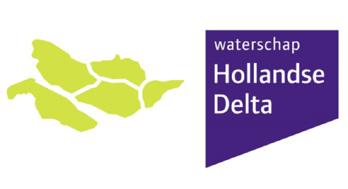
KEYNOTE
KEYNOTE
09:00 - 09:30 in Queen Elisabeth Hall
Asset Performance and Predictive Maintenance Market Trends



Knud Lueth, CEO at IoT Analytics, covers various aspects related to industry 4.0, predictive maintenance, and asset performance management. The presentation aims to provide insights into the asset performance market with a special look at condition monitoring and predictive maintenance.

09:30 - 10:00 in Queen Elizabeth Hall
Practical application of smart maintenance at Takeda

Giovanni Seggio, Head of Maintenance at Takeda, elaborates on the smart maintenance roadmap at the Takeda pharmaceutical production site based Lessines. Real teamwork allows to meet the challenge of managing a growing number of installations which increased fivefold between 2016 and 2022. At the same time, operational performance was improved: a drastic reduction in emergency interventions, and 99% of operations completed on time!
KEYNOTE
10:00 - 10:30 in Queen Elisabeth Hall
Preparing for the Future: Digitisation & Automation in Supply Chain
Stefan Roelans, the Technical Manager for Supply Chain Projects at Colruyt Group Smart Technics, articulates insights on harnessing digitization and automation to modernise supply chains. In his presentation, Roelans delineates the integration of robotics and innovative engineering within smart distribution centres. He expounds on the organisation’s initiative in Londerzeel, emphasising the implementation of cutting-edge technology to enhance efficiency and reduce order costs, highlighted by collaborations with different suppliers to streamline logistical processes.
15:30 - 16:15 in room Okapi 3
Ignite Collaboration through Real-time Predictions! Case Cosun

Peter Van Dam, Programme Manager Smart Operations at Cosun Beet Company, explains how Cosun implemented a real time data repository (data lake) and organisation. He shares what lessons learned are in working in a multi-vendor situation with a lot of legacy and how to come to results by means of use cases.
15:30 - 16:15 in room Gorilla 1
End-of-life Decision-Making: A Practical Approach
In this presentation, Arnoud Hogendoorn, Maintenance Engineer at Waterschap Hollandse Delta, and Matthijs Meijer, Asset Management Professional at IES Asset Management, provide valuable insights into the practical approach of making end-of-life decisions for assets. The speakers delve into the motivation behind the need for better designing of end-of-life strategies and share the steps they have taken to gain control over the decision-making process surrounding asset end-of-life. They emphasize the importance of taking a systematic approach to address this critical aspect of asset management.
16:15 - 17:00 in room Okapi 2
Supporting the Field Worker: using operations data to improve Asset Performance: Case indoor farming
The presentation by Jules Oudmans from UReason, accompanied by Emiel Verbunt from Plantlab, focuses on the importance of a successful Asset Performance Management (APM) strategy and execution in indoor farming. The session specifically shares insights from the implementation of UReason’s APM software at PlantLab’s indoor farms in Amsterdam.
HIGHLIGHTS Conference Magazine | 23
FEATURED CASES
THURSDAY 26 OCTOBER 2023

09:00 - 09:45 in room Okapi 2
Reliability 5.0 in the particle board industry: case Unilin Panels

In this presentation, speakers Nelson Matthys from VersaSense and Simon Beernaert from Unilin Panels share their insights and experiences in implementing advanced tools and solutions to optimise maintenance practices and reduce downtime.
11:00 - 11:45 in room Okapi 2
Combining Route-based Condition Monitoring and IIoT for Asset Condition Management: Case APM Terminals

During this presentation, Oussama Lemma, from APM Terminals highlights the benefits of combining route-based condition monitoring with IIoT-enabled sensors. The methodology supports decision-making for maintenance professionals, helping them implement an effective condition-monitoring program, choose suitable technology, and ensure the cost-effectiveness of condition-based maintenance (CBM).
11:00 - 11:45 in room Okapi 3
Leveraging Digital Twins & Cloud Computing: Case optimisation of Wind Turbine Performance at Vleemo

In this presentation, Frederik Van Leeckwyck from Factry and Thomas Timmerman fro Vleemo share their journey of optimising wind turbine performance through the use of digital twins, cloud computing, and edge computing. They demonstrate how open source technologies enabled revenue increase, cost reduction, and advanced analytics.
11:45 - 12:30 in room Gorilla 1
Framework and quantitative measurement models to manage cleaning of industrial equipment on basis of KPI’s, CO2 emission, Water waste and Circularity
The presentation showcases the results of research conducted by the Asset Management research group at HZ University of Applied Sciences. The development of theoretical measurement models for CO2 emission and circularity KPIs is presented, followed by their practical applicability and quantification in the context of cleaning industrial equipment. The case study specifically focuses on the cleaning of a heat exchanger.
13:30 - 14:15 in room Gorilla 3
Improving furnace efficiency with fiber optic technology for Aperam

With fiber optic technology, temperatures can be measured on every square meter of a furnace’s outer casing during its operational heat cycles. One of Aperam’s stainless steel furnaces was equipped by Fluves with such monitoring system. A user-friendly web interface showing real-time heat maps of the furnace enabled Aperam’s operations team to identify the parts of the furnace that needed repair, saving the cost of replacing the entire thermal insulation.
14:15 - 15:00 in room Okapi 2
Lessons learned from a journey to Predictive Maintenance: Case ZF Wind Power
In this presentation Jan Van Nylen of ZF Wind Power Antwerpen takes the audience through their digitalisation journey in Machine Maintenance. Jan shares both the successes and failures encountered along the way, offering valuable insights and learnings from their ongoing pursuit of a data-driven maintenance approach for their machines.

HIGHLIGHTS
24 | Conference Magazine
OPENING KEYNOTES
09:00 OPENING ADDRESS
� Johan De Coster, Chairman at BEMAS - Belgian Maintenance Association vzw/asbl + Wim Vancauwenberghe, Director at BEMAS - Belgian Maintenance Association vzw/asbl
09:00 ASSET PERFORMANCE AND PREDICTIVE MAINTENANCE MARKET TRENDS
� Knud Lasse Lueth, CEO at IoT Analytics
Industry 4.0 adoption, key use cases, and KPIs
Understanding predictive maintenance and asset performance management
• The differences between diagnostics and predictive analytics and their applications
• Case studies illustrating the benefits of truly predictive analytics in maintenance applications
09:30 PRACTICAL APPLICATION OF SMART MAINTENANCE AT TAKEDA
� Giovanni Seggio, Head of Maintenance at Takeda Lessines

• Building a solid base of historic Asset Performance data
• Practical examples of predictive maintenance and condition monitoring
Setting up Resilience through an Asset Investment Management Program (AIMP)
Application of new technologies (AR, Drones, ...)
• The next steps in the digitisation roadmap
10:00 CASE
PREPARING FOR THE FUTURE: DIGITISATION & AUTOMATION IN SUPPLY CHAIN
� Stefan Roelans, Manager Supply Chain projects at Colruyt Group Smart Technics

Smart Distribution Centres: Robotics and innovative Engineering in Logistics
• Data-Driven Optimisation through Smart Sensors and Digital Twins
Refining Supply Chain processes through real-time and historical data tracking
TRACK 1.1 : HUMAN CENTRIC DIGITAL TRANSFORMATION
11:00 NATURAL LANGUAGE PROCESSING AND AI IN MANUFACTURING: FROM HYPE TO REALITY
� David Ariens, Manager Analytics at AVEVA Select Benelux
• AI’s recent progress in manufacturing and its impact on Operations & Maintenance
• The role of Natural Language Processing (NLP) and Digital Twins in enhancing guidance systems for control room and field operations
• The significance of data quality, Cloud-native technologies, and data sharing in enabling AI adoption in the industry Insights into the AI revolution, use cases for AI in manufacturing, and how to effectively prepare for AI deployment
11:45 HOW TO BUILD A HUMAN-CENTRIC WORLD CLASS MAINTENANCE ORGANISATION ON SAP
� Tim Faulkner, Vice President Sales, EMEA at Sigga Technologies
+ Ty Levine, Vice President Global Marketing at Sigga Technologies
The role of human-centricity in optimising maintenance operations with SAP
• The value of digital transformation for blue-collar departments
• 20+ years of experience to showcase real-world examples
Technology alone is insufficient for world-class maintenance; a people-centered approach is essential
13:30
WHY DIGITAL MAINTENANCE TRANSFORMATIONS OFTEN ARE FAILING!
� Tom Rombouts, 4.0 Director at I-care
Insights into the challenges behind failures in digital maintenance transformations
From process data to Digitalisation
• Alternative Methodologies
• How to overcome these challenges
Collect, Connect, Manage, Analyze
* Conference programme on the moment of publication may be subject to change.
CONFERENCE PROGRAMME* OCTOBER 25 TH 2023
Queen Elisabeth Hall
Okapi 2
CASE CASE Conference Magazine | 25
14:15
MAINTENANCE TECHNICIAN OF THE FUTURE - UNDERSTANDING THE 4 D’S
� Mark Haarman, Managing Partner at Mainnovation
• Maintenance technicians face significant transformations in the ever-evolving industry 5.0.
Four major trends (De-aging, Decarbonization, Digitisation, and Demographic Change) impact the work of maintenance technicians.
Challenges include understanding the dynamics of De-aging, embracing Decarbonization efforts, and adapting to Digitisation.
Attendees gain knowledge to navigate the evolving maintenance industry and leverage the trends as opportunities for success.
15:30 HOW TO SAVE AND TRANSFER EXPERT KNOWLEDGE IN MACHINE SERVICE?
� Sina Kämmerling, CEO & Co-Founder at FINDIQ GmbH
Urgent need to capture expert knowledge before retirement to address increasing costs due to unplanned machine downtime
Collaboration between startups and SMEs in service digitization for successful knowledge transfer
Significance of knowledge transfer for the future industry and its relevance to all stakeholders
• Importance of prioritizing people in knowledge transfer over relying solely on machines for successful machine service
16:15
CASE
SUPPORTING THE FIELD WORKER: USING OPERATIONS DATA TO IMPROVE ASSET PERFORMANCE: CASE INDOOR FARMING
� Emiel Verbunt, Manager Asset Mangement & Maintenance at PlantLab

+ Jules Oudmans, Director at UReason
Successful Asset Performance Management (APM) initiatives in indoor farming can enhance margins and engage stakeholders effectively
Implementing UReason’s APM software at PlantLab’s indoor farms, with the support provided to field workers and the optimization of asset performance
Real-time insights into asset health and efficiency, empowering field workers with early failure notifications and guiding them in taking appropriate actions through APM software
Achieving autonomous operations in indoor farming requires effective integration of technology, data, and decision support systems
TRACK 1.2 : CONDITION MONITORING FOR ASSET HEALTH ASSESSMENT & ASSET DEGRADATION
11:00 RESEARCH
NOISE-ROBUST ACOUSTIC CONDITION MONITORING
� Albermar Dominguez, Data Scientist at I-care + Kerem Eryilmaz, Research Engineer at Flanders Make
Advantages of acoustic monitoring over vibration-based condition monitoring, eliminating the need for contact accelerometers
Microphones enabling simultaneous monitoring of multiple components, leading to more scalable hardware costs
Robustness of acoustic monitoring solutions being crucial due to background noise in industrial environments
• Solutions to increase robustness and comparison of different technologies for condition monitoring, focusing on ball bearing monitoring
11:45 MULTI-VIEW CONTEXTUAL PERFORMANCE PROFILING IN ROTATING MACHINERY
� Elena Tsiporkova, Head of EluciDATA Lab (The Data and AI Competence Lab of Sirris) at Sirris + Tom Rombouts, 4.0 Director at I-care
• An innovative approach for asset performance profiling in rotating machinery
• Methodology with varying contexts to accurately estimate asset performance
A real-world dataset of vibration and operational sensor measurements to validate the approach, specifically focusing on estimating cavitation risk in feedwater pumps
Quantification of cavitation risk based on vibration and process data, allowing for real-time adjustments to optimise equipment lifetime and reduce energy consumption
13:30 THE VALUE OF CONTINUOUS MONITORING OF FLANGES, PIPES AND STEAM TRAPS WITH LOCTITE PULSE
� Jan Van Put, Regional Business Development Manager MRO4.0 at Henkel + Philipp Esser, Head of Business Development LOCTITE Pulse at Henkel
Value of continuous monitoring for flanges, pipes, and steam traps using LOCTITE Pulse
Current installation and inspection practices, technological developments, digital architecture, connectivity, sustainability, and challenges related to human and environmental factors
• Understanding the benefits of monitoring static equipment, recognizing the value drivers in terms of financial savings and human safety, and the retrofit and brand-independent nature of LOCTITE Pulse
PREDICTION Okapi 3
25/10
14:15
DEVELOPMENT OF PREDICTIVE MODELS & MONITORING OF STEAM SYSTEMS: CASE UTILITY SUPPORT GROUP AT CHEMELOT
� Peter Bosmans, Technology Manager at Sitech Services
+ Chris Sleijpen, Business process expert at Sitech Services
The development of predictive models and monitoring for steam systems, focusing on the case of the Utility Support Group at Chemelot
Predict failures in steam reducers and take preventive actions to ensure reliable steam supply and prevent consequential damage
Visualizing asset condition through data analysis, minimising maintenance costs, and proactively detecting anomalies in steam reducers
Importance of data monitoring, cost reduction through optimised maintenance, and the value of predictive models in preventing asset failures
15:30
CASE
16:15 RESEARCH
IGNITE COLLABORATION THROUGH REAL-TIME PREDICTIONS! - CASE COSUN
� Peter Van Dam, Programme Manager Smart Operations at Cosun Beet Company & Cosun + Robin Kobesen, Innovation Manager Smart Operations at Cosun
Real-time insights driving operational value
• Multi-vendor scenario strategies for success
• Digitisation as a transformative catalyst
Collaborative ecosystem for unified goals
LOOK FORWARD: INTERNAL CORROSION MONITORING FOR CENTRAL HEATING AND COOLING SYSTEMS WITH WATER

� Ivan Verhaert, Professor at EMIB at University of Antwerp + Karl Willemen, Founder & MD at RESUS
Corrosion damage and internal sludge buildup pose increasing challenges in water-based heating and cooling systems. Practical measurement and monitoring options for corrosion prevention and prediction are essential.
• Chemical treatment and reliance on assumptions about system performance are not effective solutions.
• Understanding the main cause of corrosion, poor pressurization, is crucial for effective prevention strategies.
TRACK 1.3 : ASSET MANAGEMENT 5.0
11:00 ASSET MANAGEMENT AMIDST INDUSTRY 5.0
� Jan Stoker, Sr. Lecturer & Researcher at SSAMM
Evolution of Asset & Maintenance Management and the need for Industry 5.0
• Impact of Industry 5.0 on Asset & Maintenance Management and professionals in the field
Role of Asset Management in addressing technological innovations and geopolitical issues
Preparation of professionals and the NextGen for the challenges and opportunities of this complex timeframe
Gorilla 1
11:45
ALIGNING BUSINESS OUTCOMES AND ASSET MANAGEMENT INITIATIVES
� Paul Casto, APM Industry Principal at GE Digital
The connection between business outcomes, value creation, and solutions, emphasizing the importance of alignment
Outcome mapping techniques to align business objectives with asset management initiatives for effective progress tracking
The significance of value creation in achieving business outcomes and integrating it into asset management strategies
• How asset management, maintenance, and reliability practices contribute to value creation and overcome barriers
13:30
QUANTIFYING THE BUSINESS CASE FOR ASSET MANAGEMENT
� John Woodhouse, CEO at The Woodhouse Partnership
• The business case for asset management, addressing challenges and enabling effective decision-making
• Real-world case studies on the transformative potential of asset management practices
Advocating for asset investments, adapting to change, and aligning goals with decision-making
Understanding benefits, quantifying risks, and considering human factors in asset management
14:15 MAXIMIZING ASSET BUSINESS VALUE BY OPTIMISING MAINTENANCE STRATEGIES: CASE LNG CARRIER CONVERSION INTO A FLOATING STORAGE AND REGASSIFICATION UNIT (FSRU)
� Simon van Benten, Owner & Reliability Engineering Consultant at NRS Consulting
• Optimising maintenance strategies for LNG carrier to FSRU conversions
Key topics including aligning objectives, implementing risk assessment, addressing incomplete asset data, and analyzing failure data
Leveraging condition monitoring and simulation to improve uptime and reduce maintenance workload
25/10 Conference Magazine | 27
END-OF-LIFE DECISION-MAKING: A PRACTICAL APPROACH
� Arnoud Hogendoorn, Maintenance Engineer at Waterschap Hollandse Delta
+ Matthijs Meijer, Asset Management Professional at IES Asset Management
• The importance of informed decision-making based on data and information
• Managing risks in decision-making, implementing a practical approach, and leveraging data for comprehensive assessments
Risks associated with suboptimal decision-making, gaining insights into a practical approach, and understanding the value of data-driven decision-making in asset management
16:15 DEFINING THE RIGHT ASSET STRATEGY WITH SAP ASPM
� Johan Bryssinck, Executive Manager at Dimensys
+ Pieter Dings, SAP EAM Consultant at Dimensys
Introduction to SAP intelligent asset management and asset performance management for optimising asset strategies
Demonstration of risk and criticality assessment capabilities in SAP ASPM
• Showcase of FMEA assessment as a practical approach to identifying failure modes and mitigating risks
• Importance of integrating maintenance strategies with SAP ASPM to improve asset performance and reduce costs
11:00
ARCELORMITTAL : VR 3D CRANE SIMULATOR FOR QUALITATIVE CRANE OPERATOR TRAINING
� Lies Casier, Support manager Progress academy at ArcelorMittal
ArcelorMittal’s crane operator recruitment challenge

• Difficulties in measuring crane operator skills
• Crane Simulator: VR-based training solution
Autonomous skill improvement in safe environment
11:30
BEAULIEU INTERNATIONAL GROUP: HUMANIZING THE SAP CMMS WITH AN INNOVATIVE APPROACH TO MAINTENANCE MANAGEMENT
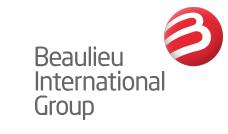
� Tom Serroels, ERP applications manager at Beaulieu International Group
• Looking for an out-of-the box solution for planning & technician teams
Transition from previous maintenance system to SAP CMMS (SAP PM & R4AM)
Implementation in a Norwegian plant
12:00 DE WATERGROEP: PROACTIVE DETECTION OF WATER LEAKAGES THANKS TO SENSORS
� Cindy Vermeire, the Director of Distribution and Supply, Sponsor of Leakie programme at De Watergroep + Filip Vancoillie, Head of Asset Management, Leakie programme manager at De Watergroep
• De Watergroep’s response to water resource challenges


• €17.8 million investment in sensors and data loggers
Precise data for managing extensive pipe network
Data-driven efficiency in leak detection and prevention
13:30
DUBAI MUNICIPALITY: UNLEASHING DIGITAL TRANSFORMATION POTENTIAL IN DUBAI’S WASTE MANAGEMENT
REVOLUTION: FROM WASTE TO SUSTAINABLE SOLUTIONS
� Ata Aboshi, Senior Treatment Systems Projects Engineer in Waste Operations Department at Dubai Municipality
• Dubai’s digital innovations in waste management

Tackling waste tracking and differentiation challenges
Integrated Waste Management System (IWMS) with data-driven solutions
• GIS-based waste bin localization and real-time waste collection system
14:00 SAUDI ARAMCO: CRITICAL PUMPS LIVE PERFORMANCE SEEQ DASHBOARD
� Nezar Ba-Aqeel, Reliability Engineer at Saudi Aramco + Samil Alshaibani, Reliability Unit Supervisor at Saudi Aramco
• Saudi Aramco’s SEEQ dashboard for critical pumps

• Live view of pump performance against OEM curve
Automatic capture of low/high performance events for analysis
Improved pump reliability, energy savings, and higher output
14:30 US STEEL KOSICE: MAINTENANCE TRANSFORMATION - INCREASE LABOUR PRODUCTIVITY AND REDUCE MAINTENANCE COSTS

� Branislav Kysel’, PhD., Process Manager Maintenance Reliability at US Steel Kosice + Juraj Valent, Process Maintenance Manager at US Steel Kosice
Strengthening competitive position in Europe
Objectives: increase productivity, efficiency, and reduce costs
• Three phases of maintenance transformation
• Focus on planning, reliability, preventive maintenance, and autonomous maintenance
15:30 CASE
TRACK 1.4 : ASSET PERFORMANCE 4.0 AWARD
Gorilla 3
25/10 CASE
CASE CASE CASE CASE
CASE
CASE
15:30 VINÇOTTE: L.I.F.T PLAN - VIA PROJECT TRACK
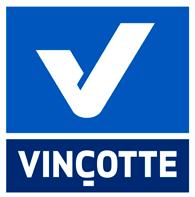
� Martijn Cuyx, Innovation Manager at Vinçotte
Addressing process efficiency and customer value
• Adapting to technological progress and digitalization
• Becoming a data organization through digital transformation
Using cloud-based digital twin platform for inspections
16:00 WATER-LINK: DIGITAL WATER METER - METER DATA MANAGEMENT PLATFORM

� Ann Vylders, Chief Support Officer at Water-link + Hans Smeuninx, Asset Manager at Water-link
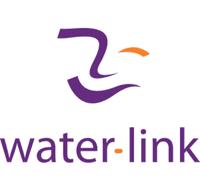
Manual customer consultation due to lack of digital meters
• Integration of digital water meters with data platform for automatic invoicing
• Improved operational efficiency through automation
Integration of data lake with IoT measurements for comprehensive dashboards
AWARD SHOW
17:00 RECEPTION
18:00
GENERATIVE AI: THE NEXT WAVE OF AI-BASED IMPROVEMENTS IN ASSET PERFORMANCE
� Olivier Noterdaeme, Senior Partner at McKinsey
• Generative AI’s potential in manufacturing operations
High-value applications in manufacturing
Requirements for building and scaling AI capabilities in organizations
18:45 AWARD SHOW
Interview with 4.0 award candidates
More information about the candidates on page 46
• Announcement of the winner
19:30 WALKING DINNER
Queen Elisabeth Hall
Even though your industrial equipment doesn’t have a heart and soul, it still has a pulse.
LOCTITE Pulse is an easy-to-use smart maintenance solution that can detect asset failures early on and enables monitoring of your equipment with an app.

Manage your equipment with an easy-to-use, web-based app
Reduce maintenance efforts

Identify and solve problems
Scale across multiple assets easily
CASE 25/10
Scan the QR code to request a free DEMO and to find out more LISTEN TO YOUR EQUIPMENT’S HEARTBEAT renniW o f t he BEMASDIGITAL INNOVATION A W DRA Most innovative product for maintenance Pulse CASE CASE
TRACK 2.1 : APPROACHES AND IMPLEMENTATION METHODS FOR RELIABILITY & MAINTENANCE 5.0 STRATEGIES Okapi
09:00 CASE
RELIABILITY 5.0 IN THE PARTICLE BOARD INDUSTRY: CASE UNILIN PANELS
� Nelson Matthys, CEO at VersaSense
+ Simon Beernaert, Reliability Manager Chipboards at Unilin Panels
Reliability 5.0 to address challenges and optimise maintenance strategies
• Experiences and insights in utilizing advanced tools and solutions for improved reliability management
• The complex manufacturing environment requiring a comprehensive understanding of asset health and interdependencies
The crucial role of AI-driven solutions and IoT sensors in continuous condition monitoring and predictive maintenance practices at Unilin Panels
09:45 MONITORING OF ASSETS WITH VARIABLE BEHAVIORS AND PROCESS CONDITIONS – OVERVIEW OF METHODS AND PRACTICAL APPLICATIONS
� Christian Reinbrecht, Trainer Vibration Analysis at iba AG
Monitoring assets with variable behaviors and process conditions posing challenges in vibration analysis
• Reproducible measuring conditions are not always attainable in processes with changing parameters
• Adaptable methods that combine process and vibration data
Practical examples about the benefits and limitations of different analysis approaches
11:00 CASE
COMBINING ROUTE-BASED CONDITION MONITORING AND IIOT FOR ASSET CONDITION MANAGEMENT: CASE APM TERMINALS
� Oussama Lemma, CBM/PdM Lead at APM Terminals

+ Brahim El Asri, Corporate Oil Analysis Engineer at APM Terminals
Optimal approach for combining route-based condition monitoring and IIoT for asset condition management
Methodology emphasizing technical feasibility, data requirements, and monitoring accuracy
• Integration of manual handheld instrument routines with digital toolboxes like IIoT and data analytics
Benefits of adopting a standardized procedure for developing a CBM strategy and implementing a digital condition monitoring program
11:45
CASE
CREATING VALUE AT BOTTOMLINE BY IMPLEMENTING THE MAINTENANCE AND RELIABILITY JOURNEY: CASE LA LORAINE BAKERY GROUP
� Jan Sinnaeve, Group Director Technical Services & HSE at La Lorraine Bakery Group
La Lorraine Bakery Group’s maintenance and reliability journey over the past 7 years

• Value creation in various areas leading to bottomline growth
• Importance of people aspects in achieving success
Approach and priorities for improving maintenance and reliability across different site teams
TRACK 2.2 : DIGITAL TWINS
09:00 PREDICTIVE WITHOUT DATA - HOW IS THE DIGITAL TWIN REVOLUTIONIZING MAINTENANCE?
� Florian Stark, Sales & Business Development at Industrial Analytics IA
• Hybrid model approach for digital twins in maintenance optimization
• Differentiating physical-based models from pure statistical models
Data-driven insights for machinery behavior and maintenance optimization
Showcase of a chemical plant use case and operator support through deeper insights
Okapi 3
09:45
CASE
DATA SPACE FOR MANUFACTURING & MAINTENANCE: THE SM4RTENANCE PROJECT + CASE IJSEL TECHNOLOGIE
� John Deken, Lead Engineer Systems and Integration at IJssel Technologie
+ Matthijs Punter, Senior researcher at TNO
Leveraging the Asset Administration Shell (AAS) for maintenance data space
• Challenges of collecting and managing large volumes of data
Considerations for sharing maintenance data with external organisations
Importance of a digital strategy for long-term maintenance data management
11:00
CASE
LEVERAGING DIGITAL TWINS & CLOUD COMPUTING: CASE OPTIMISATION OF WIND TURBINE PERFORMANCE AT VLEEMO

� Frederik Van Leeckwyck, Business Development Director at Factry
+ Thomas Timmerman, Project Engineer at Vleemo
Regulatory compliance with regard to shadow flicker and ice formation
• Iterative approach and open-source software for value discovery and creation
• Benefits achieved: increased revenue, reduced costs, and improved operational efficiency


OCTOBER 26 TH 2023
2
11:45 DIGITAL FACTORY - MAINTENANCE WITH VIRTUAL TOURS, INDOOR NAVIGATION AND REAL-TIME DATA
� Katelijne Van Renterghem, Sales Director at osapiens Services
+ Tobias Schlereth, Head of Asset Operations at osapiens AssetOps
• How to optimize maintenance operations and transform factory management
• Leverage the digital factory’s real-time data and 3D model for streamlined maintenance planning and execution
Practical solutions for integrating the physical and digital worlds in maintenance, including indoor navigation and asset identification
Tips to unlock your factory’s full potential in maintenance management
TRACK 2.3 : ESG & SUSTAINABILITY OPTIMISATION & REPORTING
09:00 OPERATIONS, SUSTAINABILITY AND ESG REPORTING
� Sven Strassburg, Principal Solution Architect Sustainability Software at IBM
• Asset performance management and augmented intelligence for operational excellence and sustainability goals
Emphasis on reducing inspection time, accurate alerts, and leveraging AI and historical data for predictive maintenance
How these methods contribute to longer asset life-cycles and waste reduction
• Insights on making assets more sustainable and achieving operational objectives
09:45
CASE
THE JOURNEY FROM ASSET DATA CAPTURING TO ENERGY OPTIMIZATION: CASE CARGILL
� Wybren van der Meer, Senior Consultant at AG Solution
+ Thais Simões, Process Improvement Engineer at Cargill
• The importance of data in achieving energy optimization
• Creating a data model for multiple sites to enhance energy management
Addressing challenges in deployment, connectivity and user adoption of energy management systems
Industry 4.0 data roadmap and practical use case at Cargill
11:00 HOW TO ACHIEVE NET POSITIVE SUSTAINABLE BUSINESS PROCESSES BY IMPLEMENTING SUSTAINABLE AI?
� Yarne De Munck, Co-Founder at PolySense
Net positive sustainable business processes achieved by implementing sustainable AI
• A sustainable strategy incorporated to enhance the bottom line and create a positive impact
• The concept of Sustainable Intelligence and its practical use cases
The connection between sustainability, technology, and future competitiveness
11:45
CASE
09:00
FRAMEWORK AND QUANTITATIVE MEASUREMENT MODELS TO MANAGE CLEANING OF INDUSTRIAL EQUIPMENT ON BASIS OF KPI’S, CO2 EMISSION, WATER WASTE AND CIRCULARITY
� Albert Repko, Asset Management Researcher at HZ University of Applied Sciences
+ Hans Borgt, Global Technology Associate Industrial Cleaning at DOW Benelux

• Framework and models for managing industrial equipment cleaning based on KPIs (CO2, circularity)
Addressing the challenge of quantifying sustainability objectives practically
Demonstrating practical application of CO2 and circularity KPIs in waste minimisation during cleaning
• Asset management-based framework for overseeing sustainability objectives at all levels
MOTORBOX: A POWERFUL TOOL TO SIMPLIFY ENERGY AUDIT OF MOTORS DRIVEN SYSTEMS
� Abdessalim Arras, Engineer at EDF
An innovative tool developed by EDF to simplify electrical energy audits of motor driven systems Challenges addressed including accurate power measurements and selecting suitable motors for energy audits
• Software tools for motor selection, energy consumption recording sensors, and evaluation of savings through scenarios
• Streamlined energy audits, increased potential for energy savings, and specialized software assistance
09:45
LESSONS LEARNED FROM THE LARGEST ESA-TRIAL IN HISTORY
� Simon Jagers, Founder at Samotics
• Insights from monitoring the condition and energy efficiency of 1.000 critical machines for 4 years
• How ESA provides practical value today: Several real-world cases concerning energy and condition monitoring
A vision of “VFDs with PhDs” on the shop floor, orchestrated by smart software in the cloud
Gorilla 1
TRACK 2.4 : MOTOR SYSTEMS IN INDUSTRY 5.0
Gorilla 3
26/10 Conference Magazine | 31
11:00
CHALLENGES RELATED TO THE INCREASED ELECTRIFICATION AND ADVANCED MONITORING OF ELECTRICAL INDUSTRIAL ASSETS
� Frits Petit, Expert Vibrations & Mechanics at Laborelec
+ Olivier Antoine, Delivery Lead - Power Networks & Industry at Laborelec
Challenges in increased electrification and advanced monitoring of industrial assets
• Power quality, integration of power electronics, and risks of oscillations
• Monitoring techniques like power quality monitoring and torsional stress monitoring
Real-life examples and case studies about the challenges and potential solutions in the field
11:45 MOVING THE NEEDLE FORWARD: PREDICTIVE MAINTENANCE FOR ROTATING MACHINERY
� Jan Mertens, Product Director at relayr
Predictive maintenance for efficient production
Technology-business synergy in action
• Unveiling diverse methodologies in predictive maintenance
• Digitization’s role in actionable insights from complex data
TRACK 2.5 : APPROACHES AND IMPLEMENTATION METHODS FOR PREDICTIVE & PRESCRIPTIVE MAINTENANCE
13:30
KEY INSIGHTS IN MAINTENANCE DIGITALISATION BASED ON PWC’S 2023 SURVEY RESULTS
� Annemieke Moerkerken, Director at PwC Nederland
+ Koen Van Kerckhoven, Manager Strategy & Operations at PwC België
• Transformation of maintenance and asset management through digital trends
PwC’s survey revealing key insights in maintenance digitalisation
Addressing gaps and challenges in the current state of digitisation
• Learning takeaways: Survey approach, derived insights, and future development strategies
Okapi 2
14:15
CASE
LESSONS LEARNED FROM A JOURNEY TO PREDICTIVE MAINTENANCE: CASE ZF WIND POWER
� Jan Van Nylen, Department Head Operational Digitalisation at ZF Wind Power Antwerpen
• ZF Wind Power’s journey towards predictive maintenance, highlighting successes and failures

• Importance of leveraging machine data and digital solutions
The evolution from capturing machine data to setting up a machine connectivity standard, implementing condition monitoring dashboards, and conducting a pilot program on predictive maintenance
Key takeaways: starting small and scaling up digitalisation efforts, learning from both successes and failures, and gaining practical insights on implementing predictive maintenance
15:30 REALIZING THE FULL POTENTIAL OF PREDICTIVE MAINTENANCE PROGRAMS
� Raz Roditti, Co-Founder and CEO at Razor Labs
• Addressing challenges in recurring machinery failures and suboptimal predictive maintenance programs
Debunking misconceptions about predictive maintenance and AI
Emphasizing the importance of data quality and prescribing specific maintenance actions
• Exploring strategies to transform predictive maintenance initiatives into value drivers using AI sensor fusion
16:15
CASE
COLLECTIVE INTELLIGENCE AT THE SERVICE OF OPERATIONAL EXCELLENCE: CASE OCP

� Abdenour Jbili, CEO at OCP Maintenance Solutions + Nada Benazzouz, Head of Training & Consulting at OCP Maintenance Solutions
• Insights on driving cultural change for successful maintenance transformations
Leveraging digitalisation and robust processes to maximize the benefits of predictive maintenance
Tailoring maintenance programs based on organisational context, vision, and ambitions
• Overcoming challenges in prioritizing and implementing change for asset owners
TRACK 2.6 : ARTIFICIAL INTELLIGENCE SYSTEMS & ALGORITHMS
13:30
RESEARCH
DATA-CENTRIC, PHYSICS-BASED AND HYBRID FRAMEWORKS FOR ASSET PROGNOSTICS AND HEALTH MANAGEMENT IN INDUSTRY 4.0 FACTORIES
� Pradeep Kundu, Assistant Professor at KU Leuven
+ Thomas Timmerman, Project Engineer at Vleemo
• Failure/degradation of assets in Industry 4.0 factories impacting productivity, quality, and costs
Data-centric and physics-based models addressing limitations of machine learning in health assessment
Hybrid frameworks combining data-centric and physics-based approaches for improved accuracy
Challenges including limited data availability, domain-specific processing, and modelling uncertainty
Okapi 3
26/10
15:30
BUILDING AND VALIDATING AN EXPLAINABLE ANOMALY DETECTION SYSTEM WITHOUT GROUND TRUTH: CASE DRIVETRAIN FAILURES OF WIND TURBINES
� Robbert Verbeke, Data Scientist at Sirris
Suitability of SCADA-based condition monitoring for wind turbine fault diagnosis
• Controlled experiment on the effectiveness of SCADA-based monitoring on turbines with and without failures
• Weakly supervised method utilizing a convolutional neural network for modeling normal turbine behavior
Threshold-based system suitable for early diagnosis of drivetrain failures in wind turbines
OPEN SOURCE SOLUTION FOR 3D DATA VISUALISATION
� Hewie Van Ranst, Business Intelligence Enineer at JuPaMa SRC
• Open source solution for 3D data visualization using Python scripting and a FOSS license
Addressing challenges of FOSS licensing, Python scripting, 3D visualizations, and library management
Learning takeaways: understanding FOSS benefits, Python applications, and data visualization techniques
• Python project for extracting, analyzing, and visualizing data in a 3D fashion
16:15
CASE
HOW TO USE AI TO DISCOVER REAL ANOMALIES AND PREVENT FALSE POSITIVES: CASE CLEANROOM MAINTENANCE
� Geert Vromman, CEO at CROPLAND
+ Jo Nelissen, CEO & Founder at ABN Cleanroom Technology
• Using A.I. to prevent false positives in cleanroom maintenance

Challenges addressed including managing data overload and consolidating sensor
A.I.’s role in predictive maintenance, prerequisites for data-driven learning, and setting up a win-win architecture
13:30
ADDED VALUE STRATEGIES FOR DIGITALISED LUBRICATION
� Guillermo Miró, Senior Applications Engineer at Atten[2]
• Industry 4.0 and digitisation with the need for detailed condition monitoring in maintenance
Online lubricant monitoring for early fault diagnosis and cost savings
Correlating lubricant data with operational information enabling predictive models for stress assessment and failure prevention
• Key challenges including managing fluid contamination and maximizing value throughout the lubricant lifecycle
14:15
ULTRASOUND-GUIDED LUBRICATION – WHAT’S NEXT?
� Haris Trobradovic, Area Sales & Training Manager at SDT International
+ Wojciech Majka, President & CEO at Ecol Sp. z o.o. & Ecol North America LLC
• Advancements in ultrasound-guided lubrication presented
• Challenges of determining asset condition and controlling lubrication process addressed
Integration of condition monitoring and lubrication emphasized for comprehensive coverage
Learning takeaways: Lubrication 4.0 technology and practical implementation insights
15:30
TURBINE ENGINEER DILEMMA: TO CLEAN DISASTROUSLY POLLUTED TURBINE OIL SYSTEM OR BUILD THE NEW ONE?
CASE STUDY ON 1000MWE NPP STEAM TURBINE.
� Tomas Klima, General Manager at Ecol Industrial s.r.o.
+ Wojciech Majka, President & CEO at Ecol Sp. z o.o. & Ecol North America LLC
Challenges of removing deposits and corrosion in ester-based fluid-operated lube oil systems
Considerations when deciding between cleaning or building a new oil system
• Effective technology: hydroblasting for deposit and corrosion removal

• Importance of high velocity oil flush with turbulent flow for long-term cleanliness and machine availability
16:15 HOW TO OPTIMISE LUBRICATION PLANS ON AN INDIVIDUAL BEARING BASIS
� Maxime Limbourg, RCL Director Europe South at I-care
+ Tom Rombouts, 4.0 Director at I-care
Optimizing lubrication plans on an individual bearing basis
The Wi-LubeCare system: combining automated lubrication and vibration analysis for improved lubrication strategies
• High-frequency vibration acquisition for detecting inadequate lubrication conditions
• The importance of differentiating between under- and over-lubrication and insights into optimizing greasing plans
TRACK 2.8 : ENERGY MONITORING, REPORTING AND OPTIMISATION
13:30
CASE
IMPROVING FURNACE EFFICIENCY WITH FIBER OPTIC TECHNOLOGY - CASE APERAM

� Thomas Van Hoestenberghe, CEO at Fluves
Measure temperatures on every square meter thanks to fiber optic technology
• Prioritize each location according to their expected remaining lifetime
• Advantages and disadvantages during installation and operation
Converting sensor data into predictive maintenance algorithms
Gorilla3
14:45 RESEARCH
TRACK 2.7 : SMART & SUSTAINABLE LUBRICATION
Gorilla 1
26/10 CASE Conference Magazine | 33
14:15
AUTOMATED CONTROL OF HEAT ENERGY DISTRIBUTION IN INDUSTRIAL PROCESSES WITH DATA BASED REINFORCEMENT LEARNING
� Paulien Lemay, Applied AI Researcher at Howest + Jeroen Pandelaere, Data consultant at Actemium
• Optimizing heat energy distribution in industrial processes using data-based Reinforcement Learning
• Control of cogeneration heat, Reinforcement Learning, and data quality
Understanding the application of Reinforcement Learning in process control
Importance of data quality for accurate decision-making in heat distribution optimization
15:30 LEVERAGING THE FLEXIBILITY OF YOUR (POWER) ASSETS TO LOWER YOUR ENERGY COST
� Robbe Sneyders, Principal ML Engineer at ML6
Leveraging power flexibility to reduce energy costs in companies
Exploring opportunities in flexibility markets for financial gains
• Assessing asset and process flexibility for effective optimization
Addressing rising energy costs, uncertainty, and sustainability challenges
16:15 PUMP OPERATIONAL AND ENERGY INTELLIGENT, EDGE BASED TRACKING AND IMPROVEMENT IN REAL TIME AND ITS IMPACT TO INCREASE ASSET PERFORMANCE AND LIFETIME
� Artur Hanc, CEO at Elmodis sp. z o.o.
+ Marcin Swiech, CTO at Elmodis sp. z o.o.
• Presentation on real-time pump tracking and its impact on asset performance and lifetime
Rising energy costs, aging infrastructure, limited resources
Importance of edge computing, strategies for pump optimization, success stories and case studies
Benefits of intelligent pump tracking: optimized pump usage, reduced energy consumption
TRACK 2.9 : WORKSHOP
09:00 DO NOT END UP IN THE SWAMP OF SWALLOWED DIGITALISATION PROJECTS! (Room A)
� David Ariens, Manager Analytics at AVEVA Select Benelux
+ Omar Thiam, Sales Manager at AVEVA Select Benelux
Workshop on navigating successful digital transformation
Avoiding pitfalls in IT/OT projects
• Embracing intuitive interfaces and strategic planning
Leveraging AI for growth and optimized operations
11:00 AI POWERED ASSET PERFORMANCE MANAGEMENT (APM) WORKSHOP FOR SUSTAINABLE OPERATIONS: THE VISUAL INSPECTION USE CASE (Room B)

� Han van Gerwen, Technical Specialist Asset Management at IBM
+ Sven Strassburg, Principal Solution Architect Sustainability Software at IBM
• The transformative potential of digitisation in asset management, particularly in the area of visual inspection
Improve quality inspection consistency by 30% and achieve substantial cost savings
The accessibility of computer vision and deep learning through visual inspection, empowering subject matter experts without coding or data science expertise
The integration of visual inspection results with an Asset Management Platform, enabling remote monitoring of asset health, improved anomaly detection, and predictive maintenance for extended asset life-cycles
13:30
DISCOVER THE VALUE OF YOUR CMMS DATA (BRING YOUR OWN DATA) (Room A)
� Albermar Dominguez, Data Scientist at I-care
+ Damien Vercammen, 4.0 Director at I-care

+ Tom Rombouts, 4.0 Director at I-care
+ Vincent Leprince, 4.0 Engineer at I-care
• Drawing conclusions out of the entire CMMS history
Evaluating the evolution of the reliability performance of bad actors throughout time
Clustering maintenance interventions according to similarity
• Analysing thousands of technician feedback forms in 1 graphical summary
15:30 SIEMENS INTELLIGENT SERVICE AND ASSET LIFECYCLE MANAGEMENT - LEVERAGING MODEL-BASED RAMS METHODOLOGIES (Room B)
� Jishnu Jayaram, Application Engineer at Siemens Digital Industry Software
+ Stefan Dutré, Senior Product Manager Model Based RAMS Solution at Siemens Digital Industries Software
+ Torsten Beste, Vice President of Service & Asset Lifecycle Management at Siemens Digital Industries Software
• Workshop on Siemens Intelligent Service and Asset Lifecycle Management


• Leveraging model-based RAMS methodologies
Utilizing Digital Risk Twin for automated RAMS analyses
Enhancing product safety and reliability through data-driven approaches
Nightingale
26/10
WORKSHOPS
THURSDAY 26 OCTOBER 2023

09:00 - 10:30 in room Nightingale A
DO NOT END UP IN THE SWAMP OF SWALLOWED DIGITALISATION PROJECTS!
Join David Ariens, Manager Analytics, and Omar Thiam, Sales Manager at AVEVA Select Benelux, in this engaging workshop as they shed light on the potential pitfalls of digitalisation projects and how to steer clear of the infamous “Swamp of Swallowed IT/OT Projects.” With a tongue-in-cheek approach, the speakers emphasize the importance of adopting a strategic and well-structured approach to digital transformation.
The workshop starts by challenging the allure of complex and labyrinthine systems, encouraging participants to embrace intuitive interfaces and comprehensive training manuals. The speakers highlight the significance of ensuring seamless integration between new and existing tools to foster growth and productivity in digital endeavors.Next, the presenters take a stance on project planning, advising against winging it and adopting a scavenger-hunt-like approach. Instead, they stress the necessity of having a clear roadmap and realistic deadlines to avoid unforeseen surprises and deliver successful outcomes.
As the workshop progresses, participants are encouraged to explore the role of AI in supporting their digital ambitions. By leveraging artificial intelligence effectively, organisations can unlock new possibilities and enhance decision-making processes.
11:00 - 12:30 in room Nightingale B
AI POWERED ASSET PERFORMANCE MANAGEMENT (APM) WORKSHOP FOR SUSTAINABLE OPERATIONS: THE VISUAL INSPECTION USE CASE
Sven Strassburg, Principal Solution Architect, and Han van Gerwen, Technical Specialist Asset Management at IBM, delve into the transformative potential of digitisation in asset management. This workshop focuses on the latest methods and technologies in asset performance management, particularly highlighting the role of visual inspection.
The manual inspection process, known for its time-consuming nature and limited issue detection rate of up to 18%, poses significant challenges to organisations. This workshop showcases how leveraging AI technology and digitisation can address these challenges and unlock substantial benefits. By integrating visual inspection into the asset management framework, businesses can improve quality inspection consistency by 30%, resulting in substantial cost savings and waste reduction, amounting to up to 1.2% of annual revenue.
The presentation emphasizes the accessibility of computer vision and deep learning through visual inspection. Attendees will witness how subject matter experts can harness an intuitive toolset to label, train, and deploy deep learning vision models without coding or data science expertise.
The workshop offers a live demonstration of IBM Visual Inspection, showcasing its application in real-time scenarios. Participants will witness how AI can swiftly identify and filter defective or misplaced components in an assembly line, thereby optimizing efficiency and ensuring consistent product quality.
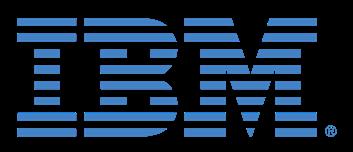
HIGHLIGHTS Conference Magazine | 35
Monitor, Manage, Maintain. IBM Maximo
Visit IBM at Booth #F3
13:30 - 15:00 in room Nightingale A
DISCOVER THE VALUE OF YOUR CMMS DATA (BRING YOUR OWN DATA)
During this workshop, the participants will explore their CMMS data using I-care’s I-Mining tool. This AI tool analyses your CMMS data, using NLP (Natural Language Processing), to help you in identifying bad actors in your technical installation, as well as indicate what are the most relevant learnings from all interventions performed on these bad actors.

This workshop allows you to analyse 50.000 or more historic work orders at once!
A cloud environment is put at your disposal, where you can explore your own data in a secure way!
The participants need to provide the CMMS export 2 weeks in advance in order to have time to prepare the data into the cloud environment.
The participants receive a list of data fields that need to be made available, and receive a NDA that assures the safe handling of their shared dataset.
15:30 - 17:00 in room Nightingale
B
SIEMENS INTELLIGENT SERVICE AND ASSET LIFECYCLE MANAGEMENT - LEVERAGING MODEL-BASED RAMS METHODOLOGIES

Join Torsten Beste, Vice President of Service & Asset Lifecycle Management, along with Stefan Dutré, Zakaria Bachir, and Jishnu Jayaram from Siemens, in this insightful workshop on “Siemens Intelligent Service and Asset Lifecycle ManagementLeveraging Model-Based RAMS Methodologies.” The workshop unveils a comprehensive solution that spans from product development and simulation to manufacturing engineering and service lifecycle management. Through the Digital Risk Twin concept, attendees explore how this innovative approach transforms traditional Reliability, Availability, Maintainability, and Safety (RAMS) Engineering methods.

Throughout the workshop, the presenters showcase how the Digital Risk Twin approach revolutionizes RAMS Engineering by enabling automated, data-driven, and precise analyses. This model-based methodology allows manufacturers to proactively assess product safety and reliability during the design phase, ensuring informed decision-making and avoiding costly modifications post-implementation.
The workshop culminates in a compelling case study that illustrates the practical application of the Digital Risk Twin approach. Attendees gain valuable insights into the latest trends in RAMS Engineering and its significance in optimizing system performance, safety, and maintenance.
HIGHLIGHTS
Conference Magazine | 37
© A Room with a ZOO
LIST OF EXHIBITORS
Booth number
E5 ABB





F8 AG SOLUTION

C7 ANYBOTICS
D8 ATTEN [ 2 ]
C3 - D3 AVEVA SELECT BENELUX


C8 AVK BELGIUM
B6 BELDEN
A1 BOTIQUE
B1 DIMENSYS
A6 ELGI COMPRESSORS
C5 EMERSON
A3 ENDRESS+HAUSER

E1 - F5 ERIKS
F1 FLUVES
A5 GE DIGITAL
F4 HENKEL
A2 HMS NETWORKS

E4 HOWDEN
D7 HYTORC BENELUX

D6 IBA BENELUX

F3 IBM

A4 I-CARE

OUR SPONSORS:


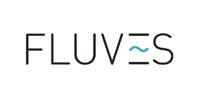

Booth number
F10 IFS ULTIMO
D9 IPERCEPT TECHNOLOGY


E7 ISENSPRO
F7 KAPERNIKOV
C2A K HEIRON SP BY VYNZ E
D4 MAINNOVATION
C2C MARATHON BY ARUNDO
E6 NANOPRECISE
A9 OSAPIENS

B2 PDM
F6 PROMETHEUS
F2 SDT ULTRASOUND SOLUTIONS



C6 SERVICENOW




B4 SIEMENS

E2 SITECH SERVICES








D5 SIGGA TECHNOLOGIES
C4 SOA PEOPLE

F9 TERRA INSPECTIONEERING
B3 TROIA

C9 UE SYSTEMS


E3 VERSASENSE
B5 YAZZOOM
D2 ZNAPZ

EXHIBITION
38 | Conference Magazine









CONFERENCE ROOMS B3 C6 D6 E3 B4 E4 C7 Siemens Anybotics HOWDEN VersaSense iba Benelux Service Now Troia D7 C8 C9 B5 B6 E5 E6 Belden Yazzoom AVK Belgium UESystems ABB NanoPrecise D8 D9 Atten[2] IPercept Technology A3 A5 Endress+ Hauser GE Digital Hytorc Benelux Mainnovation D4 ERIKS AVEVA Start-ups ZNAPZ AVEVA Terra Inspectioneering IFS Ultimo iSensPro osapiens PDM Emerson Sigga Technologies Sitech Services Dimensys SOA People C4 Fluves F1 SDT Ultrasound Solutions F2 IBM Henkel F3 F4 ERIKS F5 Prometheus F6 Kapernikov F7 AG Solution F8 A4 A6 C2 D2 C3 D3 BAR B1 B2 C5 D5 E2 E1 B7 E7 A9 A10 F9 F10 HMS Networks A2 Botique A1 I-Care ELGI Compressors ENTRANCE EXHIBITION
Conference Magazine | 39
EXHIBITION FLOORPLAN
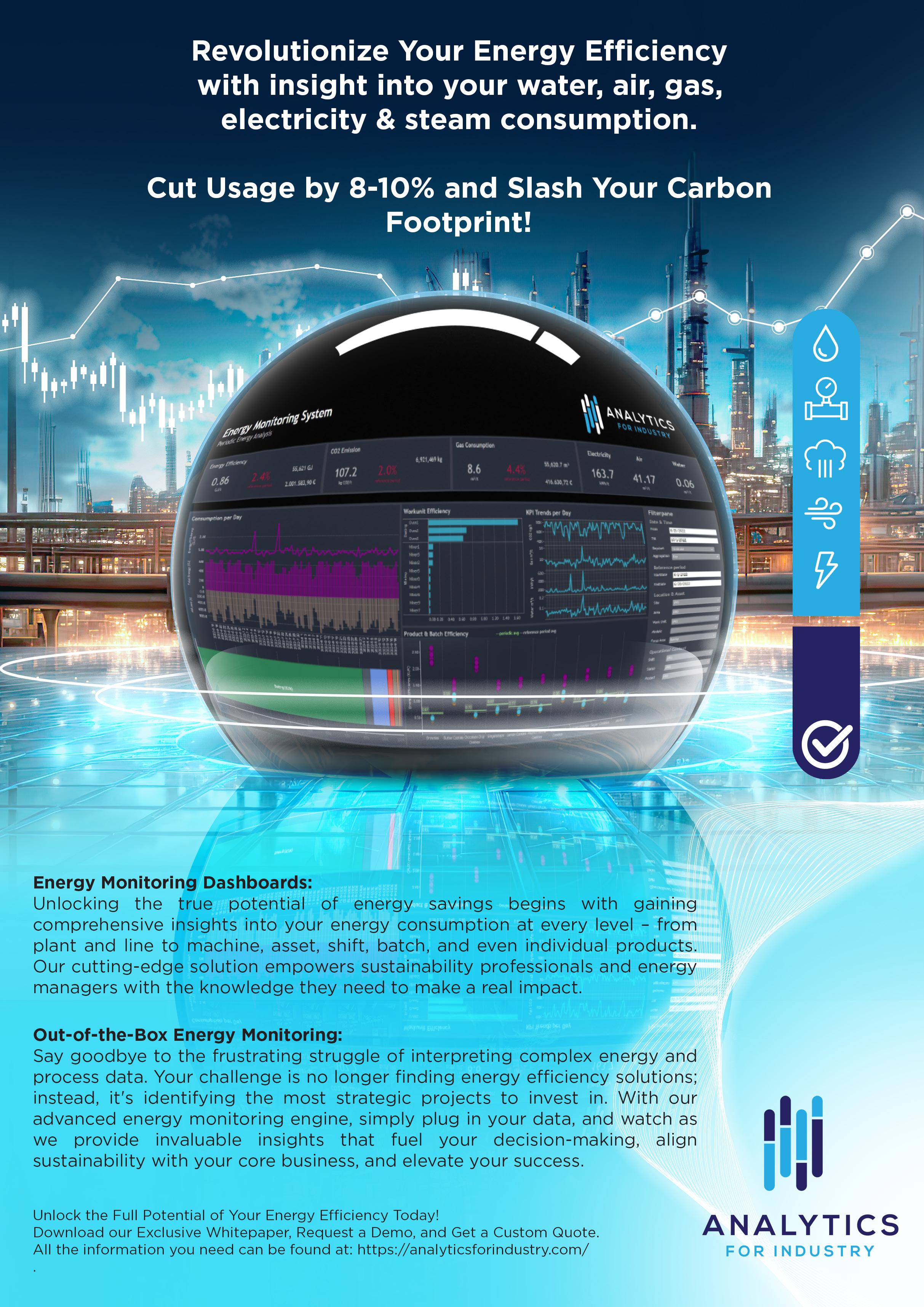
WHAT IS THE IMPACT OF MEASUREMENT ACCURACY ON PLANT PERFORMANCE
What is the impact of measurement accuracy on plant performance?
The accuracy of measurement devices has a direct impact on the decision process behind the measurement. Not only will an inaccurate measurement affect the process control as such, but it will also have a direct financial impact.
It is a common understanding in production facilities that assets must be properly maintained to maximize productivity. This is generally monitored through a well-known metric, Overall Equipment Effectiveness (OEE), where maintenance splits between reactive and preventive activities.
From a high-level, the main challenge for maintenance is to positively impact OEE by reducing downtimes as much as possible while still ensuring asset reliability. This means reducing the maintenance operation interactions to free up needed time for effective production. Simply said but can be difficult to achieve, as those two objectives contradict each other.
Even though the logic is well known, it remains a daily challenge; but is that all? Unfortunately, not. Some might even say that this is the tip of the iceberg. This is because only an “asset perspective” is considered, ignoring the role of measuring devices. What is the impact of measurement accuracy on plant performance? An inaccurate measurement is often not visible at first glance and might not be the primary focus of the plant operator.
Measuring devices must benefit from the appropriate maintenance strategy, but they can also offer more possibilities thanks to the now available innovations, such as Endress+Hauser’s Heartbeat Technology functionality.
Let’s give an example of undetected inaccuracies. Consider a ship loading (24.000 m3) of product valued at 1.5 $/l. This equates to a cargo value of 36 Mio$. A measurement deviation of 0.25%, will cost either the purchaser or the seller 90 k$ per ship. Considering 300 ships per year the cost raises to 27 Mio$ which is far beyond the operational cost to perform periodic calibrations. This 27 Mio$ represents the actual cost of inaccuracies for that example, but it’s important to note that regulations allow for transactions a maximum measurement deviation of +/-0.5%, which leads to a financial exposure of 180 k$ per ship and 54 Mio$ per year!
But the worst comes with the challenge of undetected inaccuracies. The cost of inaccuracies is generally difficult to evaluate as the measurement error at the exact time of the measurement is unknown, but the financial exposure helps to quantify in terms of risk to which extent a company is exposed to financial losses due to measurement inaccuracies.
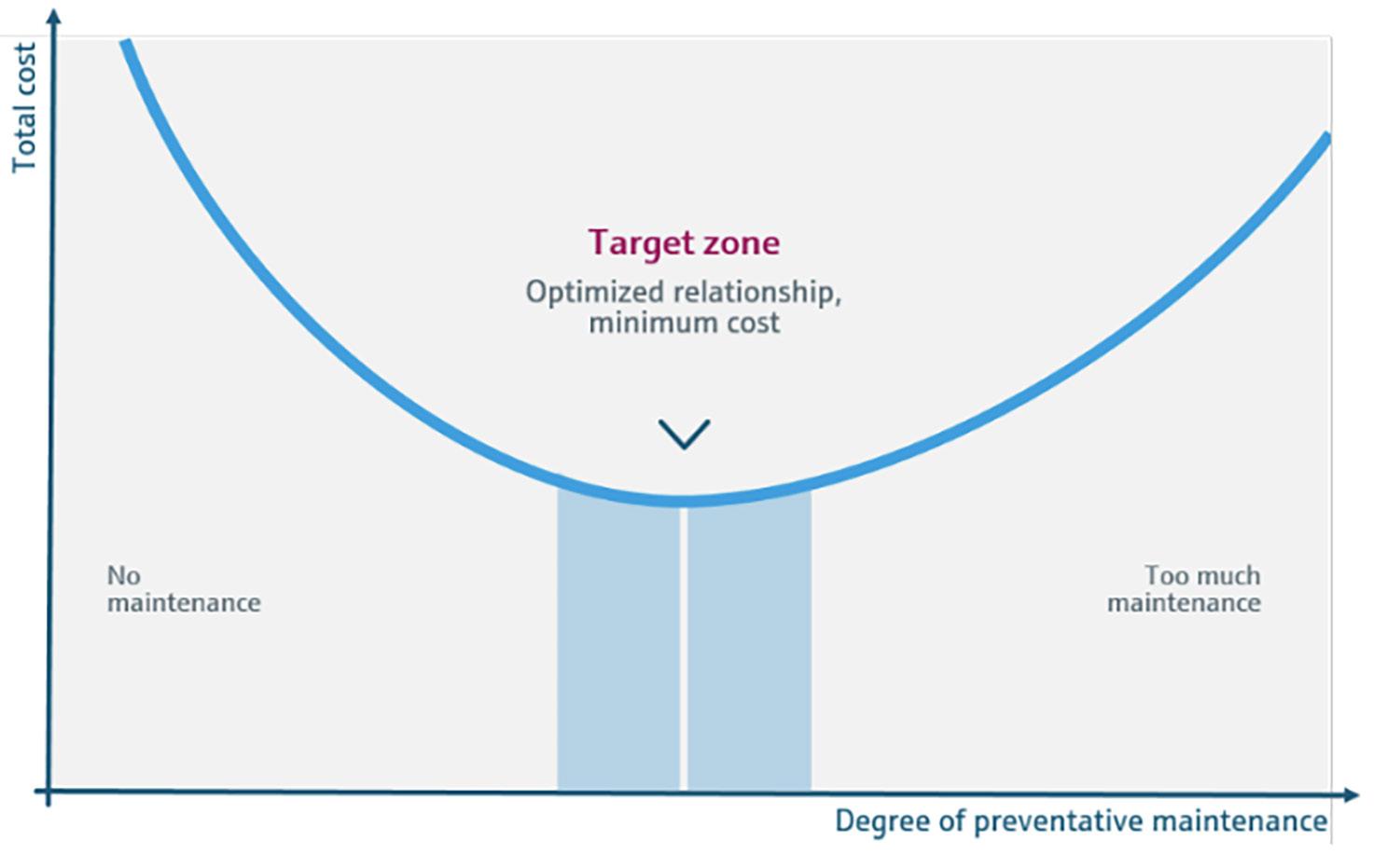
Simply said, the reason is that production facilities pay their bills and invoice what is sold. For instance, if 5% of extra energy has been consumed because of measurement inaccuracy, no one can spot it. This is “just” the margin that is gone. ■

Visit Endress+Hauser at booth A3
Continue reading:

ADVERTORIAL
“
FROM A HIGH-LEVEL, THE MAIN CHALLENGE FOR MAINTENANCE IS TO POSITIVELY IMPACT OEE BY REDUCING DOWNTIMES AS MUCH AS POSSIBLE WHILE STILL ENSURING ASSET RELIABILITY.
Conference Magazine | 41
© Endress+Hauser
PROACTIVE WATER LEAKAGE DETECTION WITH SENSORS
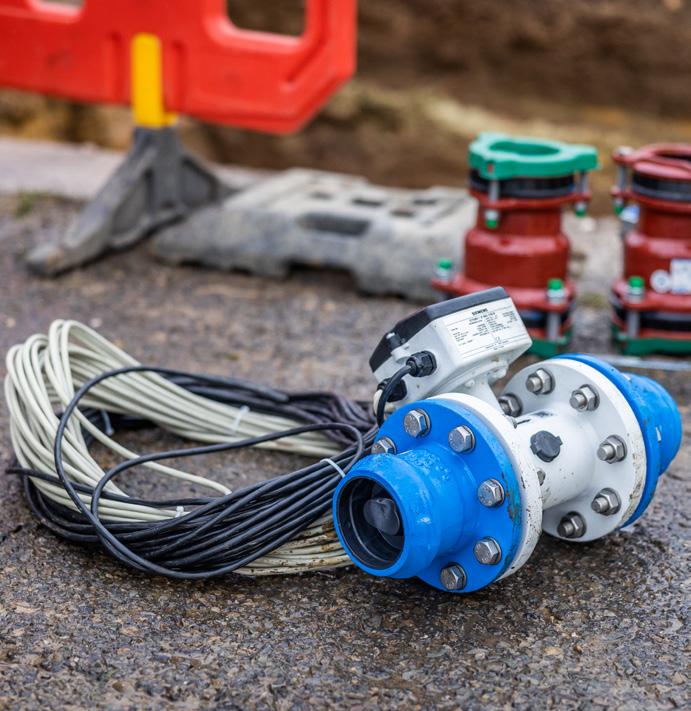 AI-TECHNOLOGY & PEOPLE
AI-TECHNOLOGY & PEOPLE
Data-driven working methods help De Watergroep to proactively detect water leakages. Not a luxury but a necessity in times of dry summers, climate change and water resources under increasing pressure. Digitisation with modular and user-friendly AI technology is the way to go, although humans also remain a crucial factor in this success story.
More than 1,500 employees, 34,000 kilometres of water pipelines supplying 177 municipalities in the provinces West- and Oost-Vlaanderen, Vlaams-Brabant and Limburg – serving over 3.3 million customers and hundreds of companies. Behind these impressive figures we find innovative player De Watergroep, Flanders’ largest drinking water company. You can understand that an extensive network of pipelines presents various challenges, including water leakages. De Watergroep has a research and development program in place to ensure a sustainable drinking water supply now and in the future. Asset performance plays a significant role in this, as explained by Head of Asset Management, Filip Vancoillie.
Responsible Asset Management
“With assets located underground, you can’t just go in any direction”, Filip Vancoillie clarifies. We can’t simply open everything up. There are permitting
limitations, and valid corporate social responsibility concerns. We see this both on a national level and abroad. The key is handling existing assets effectively, which is precisely what we do at De Watergroep.”
Specifically, the drinking water company invests €100 million in renewing the pipeline network each year. This already allows the team to replace 1.2% of it, while the aim is 1.7% by 2028. And there is more, e.g. an ambitious multi-year program to tackle leakages and drastically reduce the so-called ‘infrastructure leakage index’. De Watergroep aims to eventually be among the world leaders in terms of leak-free pipelines.
Leakie, Because Every Drop Counts
The multi-year action plan is appropriately called ‘Leakie’ and includes 7 action tracks to reduce the volume of lost water. The first action track is ‘Measure More’, which means installing more sensors for flow and pressure in the water pipeline network.
Filip Vancoillie: “We know that between the production centres and the customers, a substantial amount of water is lost. We decided to make a significant investment of €17.8 million to install 400 new flow and pressure sensors and replace 300 existing data loggers. The project provides crucial data to manage 34,000 km of pipes. Measuring more means gaining more knowledge on the system. And especially more targeted information: thanks to the new sensors, the search areas are smaller, making it possible to locate and repair leaks, including invisible ones, more efficiently. This allows us to avoid losing large quantities of water and limit consequential damage, another plus for customers. We proactively detect leaks and prevent sinkholes. Thanks to the replacement of the data loggers, we can now rely on more frequent data flows to our systems.”
The new sensors are connected to a platform where all sensor data is collected. The data is sent to a state-of-the-art,
INTERVIEW
THANKS TO THE NEW SENSORS, THE SEARCH AREAS ARE SMALLER, MAKING IT POSSIBLE TO LOCATE AND REPAIR LEAKS FASTER AND MORE EFFICIENTLY, INCLUDING INVISIBLE ONES.
“ 42 | Conference Magazine
— FILIP VANCOILLIE Head of Asset Management at De Watergroep
© De Watergroep
future-proof data lake and water management platform, which uses self-learning algorithms that process data faster and make all relevant information transparent as well. Conclusions drawn from data are actionable insights: they can be turned directly into an action or a response.
“When we set up the platform, the requirements were that it had to be user-friendly, intuitive, and future-oriented to make sure our people could work with it effortlessly, and any algorithms from other players and the research community could be integrated at any time as soon as they provide added value. From experience, we know that no single algorithm solves everything; collaboration and multiple smart algorithms lead to a sustainable and improved outcome”, said Filip Vancoillie.

Change & Communication
Meanwhile, De Watergroep is fully engaged in data-driven practices but with attention to the human factor. According to Filip, the change element is essential. “In theory, it’s great to have user-friendly technology that can help us improve. However, you also need to get your teams on board. Engage in conversations, explain well why it is necessary for us to digitalize. It’s our people who make the difference, irrespective of the technical aspects involved in Asset Management. The combination of new technology with IoT and algorithms, hand in hand with human commitment. That’s why we put a lot of effort into change & communication in our multi-year program, and with success.”
Wednesday 25 October 2023 at 12:00
JOIN THIS SESSION
PROACTIVE DETECTION OF WATER LEAKAGES THANKS TO SENSORS
INTERVIEW
Gorilla 3
Conference Magazine | 43
© De Watergroep
Innovations continue to seep in as De Watergroep plans to take further digital steps and conduct experiments with new developments in various collaborations. What exactly does this entail, how do they stand a great chance of winning the Asset Performance Award with the ‘Leakie’ project? What are the other 6 action tracks to further sustainably improve the assets?

More than enough reasons to attend the presentation of De Watergroep on Wednesday, October 25, 2023.
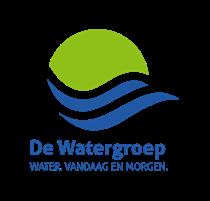
HOW TO STAY COMPETITIVE DURING THE FOURTH INDUSTRIAL REVOLU TION
It is strategically important for companies to remain competitive and profitable by improving, innovating and redirecting their business, now and in the future. This requires them to have their engineering, asset management and manufacturing processes in order. According to PDM’s Industrial Excellence philosophy, companies can only start implementing Industry 4.0 technologies when these business processes are properly set up.

Industry 4.0 technologies can help improve the company’s competitiveness by increasing the reliability of industrial facilities, reducing maintenance costs, and improving safety, thus having a substantial impact on competitiveness. Promises like these will only be fulfilled if Industry 4.0 is fully adopted, the basic processes are in order and there is strong leadership in the company.
An Industry 4.0 production facility is
characterized by the application of technologies such as 3D scanning, additive manufacturing, the digital twin, autonomous systems, Internet of Things (IoT), augmented and virtual reality, artificial intelligence and machine learning. The combined application of these technologies yields the Smart Factory. The goal of such a factory is to create a flexible, responsive, and autonomous production environment that can adapt to changing market conditions, customer needs and
Continue reading:
©PDM
supply chain disruptions. Smart Factories can increase productivity, reduce downtime and improve product quality, all while minimising waste and maximizing resource utilization. ■
Visit PDM at booth B2


Continue reading:

INTERVIEW
■
IT’S OUR PEOPLE WHO MAKE THE DIFFERENCE, IRRESPECTIVE OF THE TECHNICAL ASPECTS INVOLVED IN ASSET MANAGEMENT.
— FILIP VANCOILLIE
“
Head of Asset Management at De Watergroep
44 | Conference Magazine
© De Watergroep
Many companies use their Enterprise Asset Management (EAM) system mainly as an electronic card index or a digital work order system, unaware of the possibilities it has for Asset Management. EAM Systems like Maximo, IFS Ultimo, HxGN EAM and SAP EAM have evolved tremendously. They now offer functionalities for Asset Investment Planning, Project Portfolio Management, Asset Performance Management, Business Intelligence and Predictive Maintenance. Major steps have also been taken in the field of Mobile, GIS and BIM integration.
Are you ready for Next Generation EAM?
Our VDMXL experts can assist you with further professionalisation and automation of your Maintenance & Asset Management organisation.
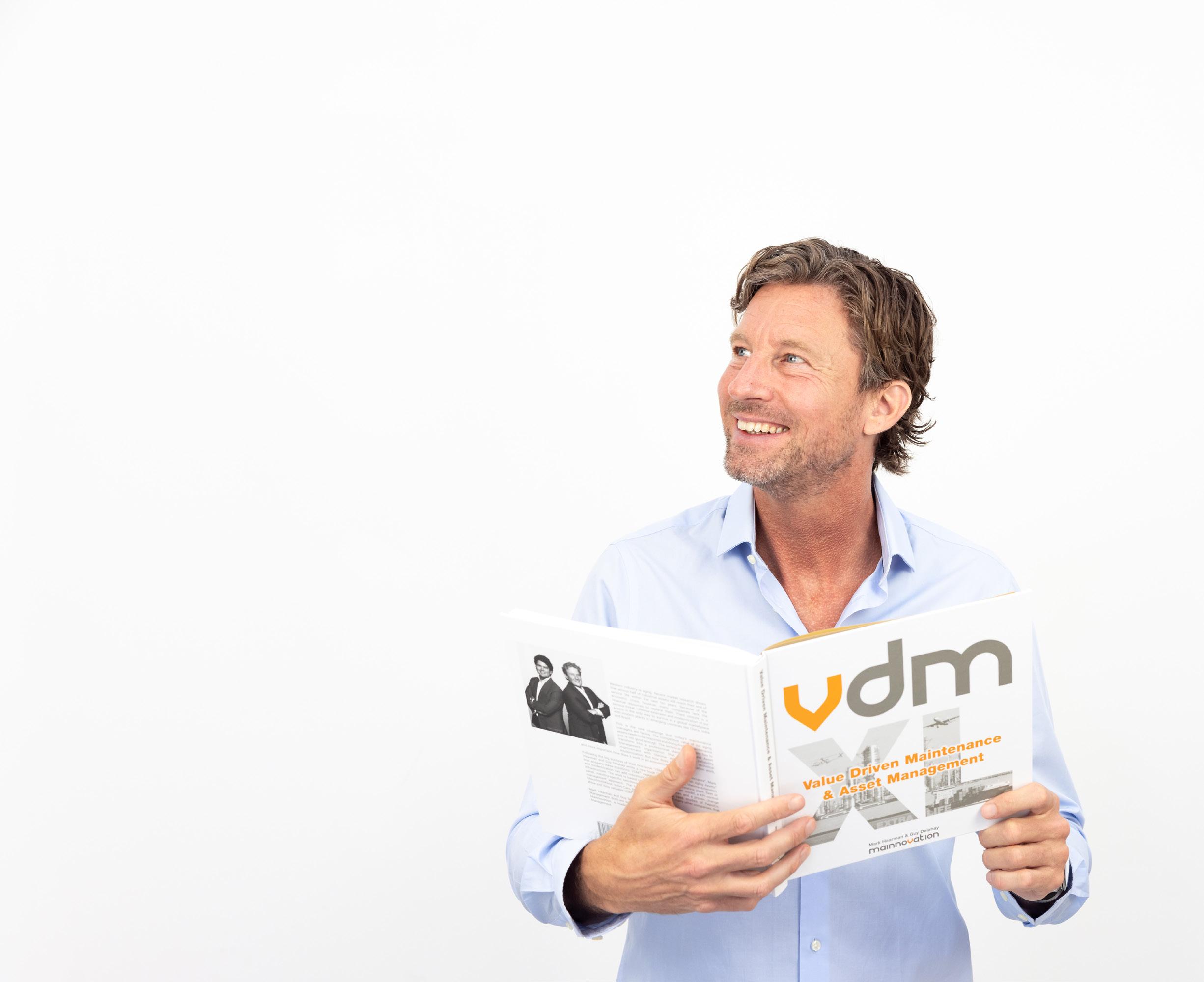
Mobile AIP PdM APM AI BIM BI PPM GIS Next
EAM
www.mainnovation.com
Generation
ASSET PERFORMANCE 4.0 AWARD SHOW

Machines and maintenance are becoming more and more intelligent. Internet of Things, predictive analytics and Big Data are new tools that will have to be part of the toolbox of the maintenance teams of the future. In times of industry 4.0, we want to honour a digital transformation focusing on maintenance, reliability and availability of the assets.
Nine contestants, nine cases... Who will win the 2023 Asset Performance 4.0 Award? Take a deep-dive in innovation projects during the Asset Performance 4.0 Award track on Wednesday 25 October 2023.
GENERATIVE AI: THE NEXT WAVE OF AI-BASED IMPROVEMENTS IN ASSET PERFORMANCE
by Olivier Noterdaeme, Senior Partner at McKinsey
Generative AI is an emerging force in the industry, and during this evening you can experience this revolution for yourself. This keynote speech lets you discover how generative AI can increase the efficiency, productivity and resilience of your manufacturing operations. Our speaker, Olivier Noterdaeme, Senior Partner at McKinsey and authority on digitalisation and analytics, elaborates on what generative AI means in the context of asset performance and how it complements more traditional Machine Learning and digital solutions. With more than a decade of experience in asset-intensive industries around the world, he is the perfect guide to take you through the world of generative AI. Challenges and risks are also covered. Concrete examples and inspiring demos show how generative AI can improve your asset performance.
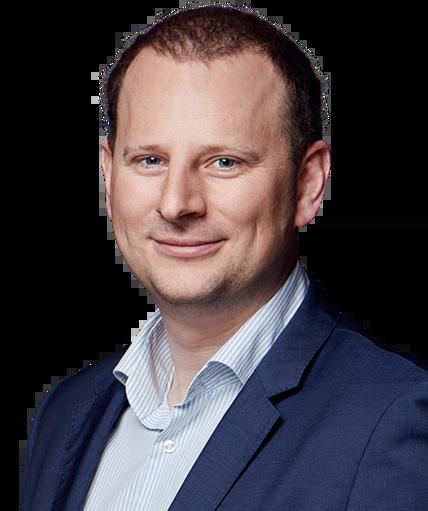 © Bemas
© Bemas
46 | Conference Magazine
KEYNOTE PRESENTATION
© Olivier Noterdaeme
MEET THE CANDIDATES
ArcelorMittal
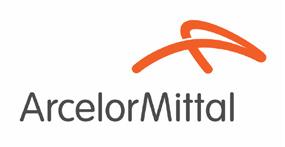
VR 3D Crane Simulator for qualitative crane operator training
To facilitate recruiting and training potential crane operators, ArcelorMittal made a ‘Crane Simulator’, using VR glasses and joysticks. One hall for the Steel Shop (ladles) and one hall for the Cold Rolling Mill (coils) are modelled in a 3D environment. Without impacting the running production, the new crane operator can improve their skill level completely autonomously following several scenarios in a safe environment in the simulator.
Beaulieu International Group

Humanizing the SAP CMMS with an Innovative Approach to Maintenance Management
Beaulieu International Group uses the SAP ERP application to manage its business processes. In alignment with their strategic digitalisation roadmap, they sought to extend the use of SAP to their maintenance activities. After careful consideration, the Belgian pride in textile and flooring solutions selected the Ready4 Asset Management solution offered by SOA People, confident that it could effectively address their current and future maintenance challenges on a significant scale. Beaulieu International Group opted to implement it in one of their production plants in Norway. This plant successfully transitioned to the comprehensive SAP CMMS solution within a remarkably brief period of time.
De Watergroep

detection of water leakages thanks to sensors
De Watergroep, the largest drinking water company in Flanders, is facing challenges due to dry summers and climate change in Europe, which are putting water resources at risk. To address this issue, the company has installed 400 new flow and pressure sensors and replaced 300 existing data loggers. This enables them to gather crucial data. The sensors allow for the efficient detection and repair of leaks, including invisible ones, thus reducing water loss and minimising consequential damage. Additionally, the data collected by the sensors is processed by self-learning algorithms in a state-of-the-art data warehouse, enabling faster and more precise leak detection, making the work of their leak detection teams more efficient.
The City of Dubai implemented an Integrated Waste Manage-ment System that focused on the role of digital transformation in enhancing corporate sustainability, with a particular emphasis on operational efficiency and corporate innovation. Through the use of a GIS system and building numbers, waste bins and waste types can now be identified and located. During waste collection, drivers utilize a mobile application to indicate collection points, while a control room unit monitors the vehicle’s movement and allocates disposal locations. RFID-based smart gates at the disposal site identify vehicles and record entry weights, enabling accurate fee deductions. This system streamlines waste management processes and promotes effective waste tracking and disposal in Dubai.
Saudi Aramco Critical Pumps Live Performance SEEQ Dashboard

Saudi Aramco Khursaniyah Gas Plant (KGP) has developed a SEEQ dashboard to monitor the performance of critical pumps at the plant. The objective of the dashboard is to provide a real-time view of the pumps’ performance in relation to the Original Equipment Manufacturer (OEM) performance curve. The dashboard visually displays the current operating point of the pumps against the manufacturer’s performance curve, including upper and lower operating limits. This allows for easy monitoring of pump performance and identification of low or highperformance events. These events are automatically captured in the trend view of the dashboard, enabling engineers to analyze and take corrective actions proactively. As a result of using the dashboard, the pumps have demonstrated improved reliability, increased technical availability, energy savings, and higher output.
US Steel Kosice
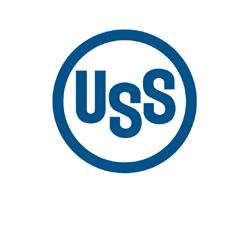
Maintenance transformation - increase labour productivity and reduce maintenance costs
The primary objective of US Steel Kosice (USSKE) was to enhance its competitive position in Europe by increasing productivity and work efficiency across three areas: production, administration support activities, and maintenance. To achieve this, a maintenance transformation initiative was undertaken, which was divided into phases, initially focusing on improving planning and scheduling to enhance labor productivity and safety. The subsequent phase aimed at enhancing equipment reliability through reliability-centered maintenance (RCM) to reduce costs and minimise downtime. USSKE also aimed to shift from corrective to preventive maintenance, targeting a 70% preventive maintenance ratio. The final wave involved introducing autonomous maintenance and integrating operators into the maintenance process, all supported by a maintenance information system.

AWARD SHOW
Proactive
Dubai Municipality Clean City Index
Conference Magazine | 47
Vinçotte

L.i.F.T plan - VIA project track
Vinçotte aimed to leverage digi-talization to simplify processes for staff and provide enhanced value to customers and their equipment. Their ultimate goal was to become a data-driven organisation, utilising digital tools to improve efficiency, accessibility of information, and occupational safety. As part of their digital transformation, Vinçotte coordinated multiple projects, including one focused on robotics and automation solutions managed by innovation teams. They also found significant benefits in using a cloud-based digital twin platform for preparing and managing inspections of critical equipment or assets.


Water-Link
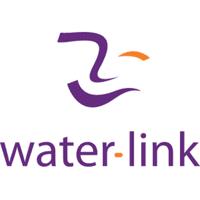
Digital Water Meter - Meter Data Management Platform

Water-Link installed digital water meters and integrated them with a data platform. This evolution has revolutionised the invoicing process, enabling automatic invoicing and data alerts. This advancement has significantly enhanced operational efficiency. Furthermore, the integration of Water-Link’s data lake with other IoT company measurements offers an additional advantage. This allows for the creation and consolidation of dashboards, providing a comprehensive overview of water production and distribution. ATTEND
Read more:
AWARD SHOW
PRESENTATIONS TO VOTE FOR YOUR FAVORITE CASE !
THESE
PRESENTATIONS 11:00 Start of the presentations 11:00 ArcelorMittal 11:30 Beaulieu International Group 12:00 De Watergroep 12:30 Lunch break 13:30 Dubai Municipality 14:00 Saudi Aramco 14:30 US Steel Kosice 15:00 Coffee Break 15:30 Vinçotte 16:00 Water-Link AWARD SHOW ©
17:00 Reception 18:00 Start Award Show with keynote presentation by Olivier Noterdaeme, Senior Partner at McKinsey 19:30 Walking Dinner 48 | Conference Magazine
CASE
Bemas



Mark Haarman elaborates: ‘The four megatrends are expressed in the four D’s: De-aging, Decarbonisation, Digitalisation and Demographic Change.’
Generation Z
The D from Demographic Change is the linking pin. Haarman: ‘I believe our youngest generation, Generation Z (born after 1995), will impact the other 3 D’s. The baby boomers working at our companies (born between 1946 and 1960) are used to do mostly visual inspections. Generation Z however, was born with a mobile phone already in their hands. With increasing digitalisation, this is a very useful skill.’ Also this generation is very aware of the growing shortage of raw materials and of
MAINTENANCE TECHNICIAN OF THE FUTURE
MAINTENANCE TECHNICIAN OF THE FUTURE UNDERSTANDING THE 4 D’S
The world of Maintenance and Asset Management is changing. Which challenges are we facing in the future? And how does a future maintenance technician look like? Understanding the four megatrends in maintenance, helps to answer these questions.

the fact that we need to take better care of the environment.
Digitalisation
Recent study – executed by Mainnovation and PwC – showed that the transition to using digital techniques in maintenance, is a long ride. ‘But the digital revolution brings new possibilities. Boosted by computers that become more powerful, sensors that become more cheap, wifi networks that become more reliable and software that becomes more intelligent.’
Haarman has high hopes for Generation Z. ‘I believe in digitalisation. It will help us to get in control regarding our (aging) asset base. And it will help us to become more
PIONEERING SUSTAINABLE INDUSTRIAL MAINTENANCE THROUGH DATA-DRIVEN PREDICTIVE MODELS
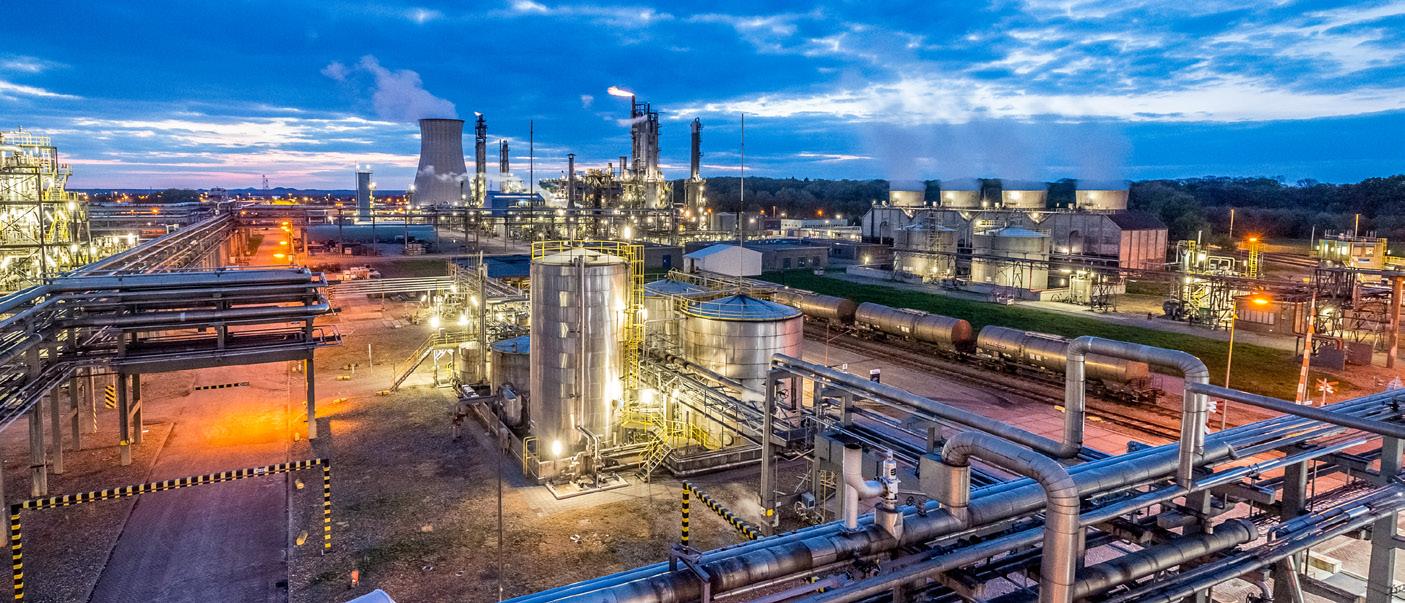
On Wednesday October 25 from 14:15-15:00h, Peter Bosmans, Technology Manager at Sitech Services, discusses the development of predictive models and the monitoring of assets and systems, based on real cases at the Chemelot site in Geleen. The objective is to improve maintenance practices by predicting failures and taking preventive actions to ensure reliable steam supply.
The presentation highlights the key stages involved in the development of the predictive model and monitoring system, including data collection, data cleaning, data modeling, dashboarding, monitoring, and advising. By leveraging data-driven approaches, we can visualize the condition of assets while they are in operation, eliminating the need for traditional inspection methods.
sustainable. And’ Generation Z is going to make a difference.’ ■
Mark Haarman is Managing Partner at Mainnovation and author of the books ‘VDM - New faith in maintenance’(2003) and ‘VDMXL - Competing with aging assets’ (2015). In his presentation on 25 October at 14h15 PM (track 1.1.3) he will explain the four D’s and specifically talk about the maintenance technician of the future.
Visit Mainnovation at booth D4
Continue reading:
The challenges addressed revolve around the ability to visualize asset conditions solely through data analysis, without the requirement for physical inspections. By monitoring data for anomalies, our clients can proactively identify potential issues, minimize maintenance costs, and enhance system reliability. The objective is to detect early signs of wear or faults to prevent consequential damage and ensure uninterrupted production.
Would you like to learn more? Come visit us at booth E2, where our experts will be available to provide you with detailed information about this project. Looking forward to meeting you soon! ■
Visit Sitech Services at booth E2


Continue reading:

© Mainnovation ADVERTORIAL
Sitech 50 | Conference Magazine
©
VISUAL INSPECTION FOR IMPROVED QUALITY IN MANUFACTURING
C HALLENGES OF QUALITY INSPECTION IN MANUFACTURING
Manufacturing operations strive to deliver the highest quality during every stage of the production or assembly process. Over half of these quality checks involve visual confirmation to ensure the parts are in the correct locations, have the right shape or color or texture, and are free from any blemishes such as scratches, pinholes, foreign particles, etc. Automating these visual quality checks is very difficult because of the volume of inspections and product variety, and because defects may occur anywhere on the product and could be of any size.
This is where IBM Maximo® Visual Inspection, an industry-leading AI-powered
computer vision platform, delivers its highest value.
As part of the IBM Maximo Application Suite, this automated visual inspection solution can monitor assets 24/7 and detect defects in under a second, dramatically enhancing operations to save time and money.

Learning from defect images that are “OK” and “NG”
Based on deep learning used by Watson, IBM Maximo Visual Inspection is designed for clients to automate visual quality inspections. Images of normal and abnormal products from different stages of production can be
ADVERTORIAL
© IBM
IBM MAXIMO VISUAL INSPECTION IS DESIGNED FOR CLIENTS TO AUTOMATE VISUAL QUALITY INSPECTIONS.
“ Conference Magazine | 51
IBM
submitted to the centralized “learning service.” The learning service will build analytical models to discern OK vs NG characteristics of parts, components and products that meet quality specifications (OK) and those that don’t (NG). Further, if there is a need to classify defects into different types to address potential root causes and fix the quality issues, IBM Maximo Visual Inspection can be trained to perform such tasks with a high level of confidence.
Machine learning for continuous improvement in defect recognition
Based on advanced deep neural networks, the models trained by IBM Maximo Visual Inspection can be deployed on pre-configured edge devices on the factory floor so that there can be very little decision latency during production. Models trained in the MVI training servers can be deployed on MVI Edge or MVI Mobile. MVI Edge can be connected to be multiple cameras at the inspection point and allows you to scale your solution to multiple plants. MVI Edge interacts with Maximo Visual Inspection to allow you to create inspections that either collect images to train models or use trained models to identify objects in images. You can create inspection rules that define whether the identified objects pass or fail inspections, and automatically create work orders.
Inspections are the central configuration components in MVI Edge. The solution can learn continuously by taking feedback from manual inspectors, who can review the automated classification and override it based on human judgment. The corrective information, along with the image from the production floor, is then included in the next training cycle for that analytical model, thereby improving its ability to discern in the future. MVI Edge continues the journey through the suite by integrating with Maximo Monitor. SMEs can send the MQTT alert messages about inspections to generate them into the Maximo Monitor data lake for exploration and analysis.
Reduce dependency on manual inspection
In December 2021, Ford Motor Company presented its prestigious IT Innovation Award to IBM Maximo Visual Inspection. Voted on by Ford’s technical community leaders, this honor is granted once a year to the technology they believe has delivered the greatest breakthrough innovation driving value for the company. By delivering AI-enabled automation, IBM Maximo Visual Inspection allowed Ford to experience measurable success in the reduction of deficits and to scale out rapidly to multiple facilities.
In an increasingly complex operations environment, organisations use IBM Maximo Visual Inspection to harness the power of data and AI to derive real-time predictive business insights and make intelligent decisions.
Add intelligent “eyes” to your operations with IBM Maximo Visual Inspection. ■
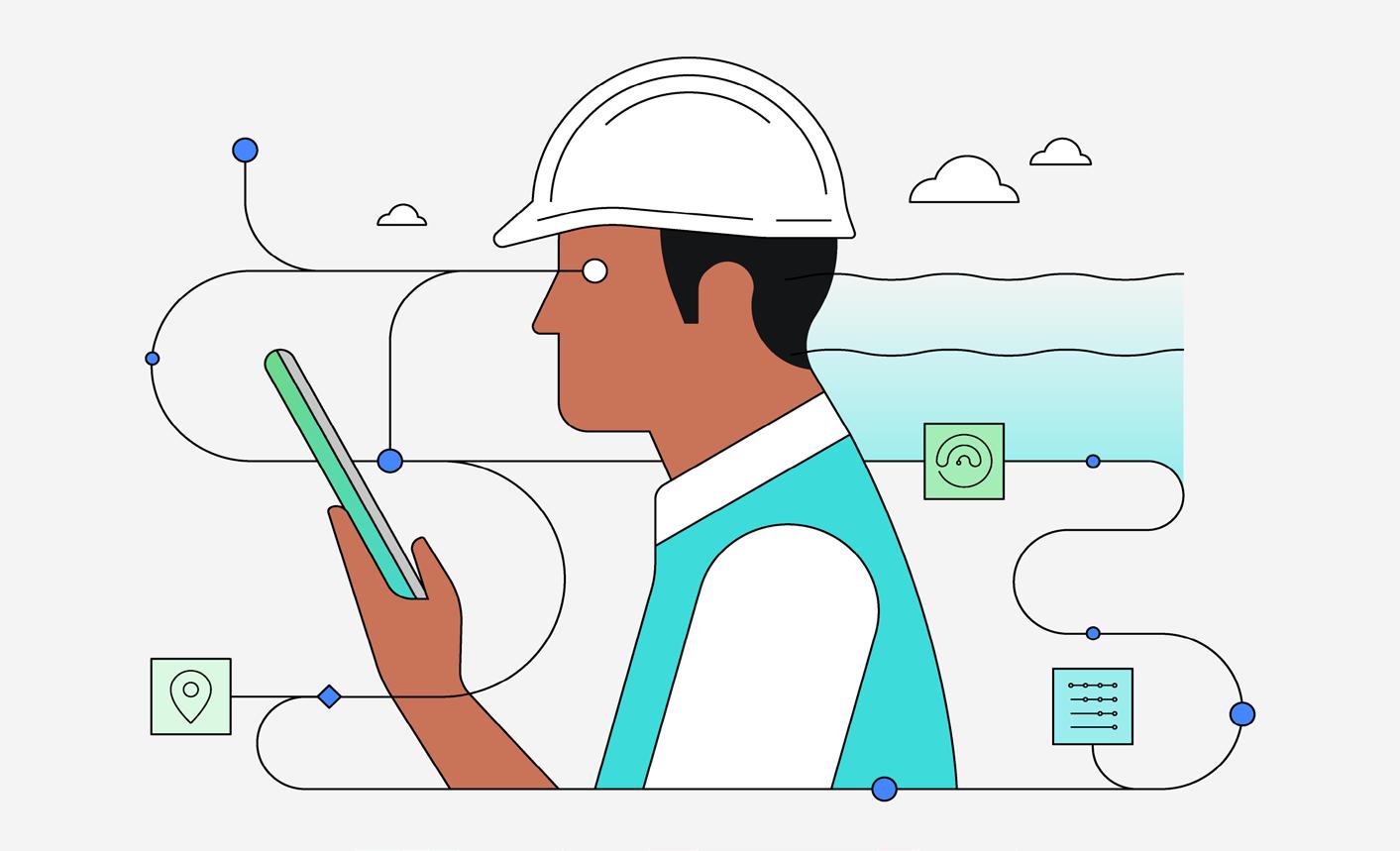
World-class observability with IBM Maximo.
Visit https://www.ibm.com/products/ maximo

Visit IBM at booth F3
Continue reading:
— IBM

ADVERTORIAL
IF THERE IS A NEED TO CLASSIFY DEFECTS INTO DIFFERENT TYPES TO ADDRESS POTENTIAL ROOT CAUSES AND FIX THE QUALITY ISSUES, IBM MAXIMO VISUAL INSPECTION CAN BE TRAINED TO PERFORM SUCH TASKS WITH A HIGH LEVEL OF CONFIDENCE.
“ © IBM 52 | Conference Magazine
ARTIFICIAL INTELLIGENCE IMPROVES YOUR MAINTENANCE PROCESSES
WHAT IS AI (ARTIFICIAL INTELLIGENCE)?
AI, or artificial intelligence, refers to the development of computer systems that can perform tasks that normally require human intelligence, such as reasoning, problem-solving, speech recognition, and decision-making.
AI technology includes machine learning, where computers can learn from data, as well as “deep learning,” where machines are able to process and understand large amounts of data, recognize patterns, and make decisions based on that data.
ELGI INTRODUCES AIR~ALERT
Enabling data analytics and real-time monitoring of air compressor parameters, ELGi’s Air~Alert is a data transmission and analysis service that monitors critical parameters to minimise downtime and maximise efficiency. The service enables customers to act in time and avoid potential failures with 24/7 remote monitoring of the compressed air system. It does this by delivering trend graphs and information about operating parameters including discharge pressure, oil temperature, variable frequency drive (VFD) speed, total running hours, trips and alerts on a live online interface accessible remotely from anywhere in the world.

Air~Alert also notifies customers and ELGi Channel Partners about scheduled maintenance, fault occurrence, and predicts commonly occurring failures.
© Elgi
Monthly summary reports on overall health and operating parameters include upcoming planned service requirements, as well as preventative maintenance based on obtained data. ■
For more information, visit: www.elgi.com/eu
AI can be used in combination with a maintenance planning system to enhance and streamline the maintenance process. A maintenance planning system is designed to organise and schedule maintenance activities and optimize asset availability. AI can analyze data and predict when maintenance is needed, optimizing the planning process and minimising asset downtime.
Ready4 Asset Management (R4AM) provides comprehensive support to all your key stakeholders, including integrations to implement AI. ■

Visit SOA People at booth C4

Continue reading:
Visit

Continue reading:

ADVERTORIAL
© Soa People
ELGI at booth A6
SMART REMOTE MONITORING AND ALERT SYSTEM FOR COMPRESSED AIR SYSTEMS
Conference Magazine | 53
WELCOME TO ANTWERP
Belgium’s second largest city offers you everything on your citytrip checklist, and even more: a medieval castle, a startling architecture and a vibrant fashion and entertainment scene. Antwerp is the industrial heart of Belgium and home to the largest integrated chemical cluster in Europe.
Based on the four fundamentals of the Antwerp economy—port, chemical cluster, diamond, retail & fashion—the city is executing an innovation strategy in three
growth clusters: digital innovation, circular economy and health.
Port of Antwerp-Bruges is now the largest European port for conventional cargo and the biggest European container port with the widest range of value-added logistics and industrial services of any European port. Port of Antwerp-Bruges creates a total of 164,0000 jobs directly and indirectly and adds economic value to the city of almost €21 billion.
WHY ANTWERP?

• Seaport in the heart of Europe
PoAB is the second largest port in Europe, to a surface of 14.322 hectares, 1,400 companies and worldwide connections with more than 1200 destinations. PoAB is ranked 13th in the top 20 container ports worldwide. PoAB is home to the largest chemical cluster in Europe, and by joining forces, the port platforms of Antwerp and Zeebrugge are strengthening their position in the global logistics chain. ■
• Close to the chemical clusters in Antwerp & Rotterdam
• Direct & fast access from Brussels airport by train every 30 minutes

• High speed train connection from Paris, London, Cologne and Amsterdam
• Conference center next to the railway station
• 2,000 beds within walking distance
• History, culture, beer, chocolate and diamonds
© StadA
54 | Conference Magazine
© StadA
ASSET PERFORMANCE CONTINUES ONLINE
THE PODCAST SERIES :
Discover the podcast series
In this insightful podcast series, we delve into the fascinating world of Asset Performance.
Available on your favorite podcast platform.
THE ASSET PERFORMANCE APP :
Download the Asset Performance app


1. Search for the event Asset Performance 2023
2. Login with the same e-mail address and password you use for the virtual portal in your browser*
3. You’re all set to use the app! Add sessions to your schedule, discover the exhibitors, chat with other attendees… and much more
LOGIN TO THE PLATFORM* :
Re-watch sessions from home
Did you know that, as an attendee of Asset Performance 2023, you get the following extras?
1. 1 year access to all recordings of the conference presentations on the virtual platform

2. View all recordings of previous Asset Performance conferences in our extensive library of +200 webinars
3. New webinars and workshops are organised after the live conference
* Forgot your credentials? Click Forgot password and a reset code will be sent to your e-mail address. The new password must contain at least 8 characters (1 uppercase and 1 lowercase letter, 1 number and 1 special character).
Conference Magazine | 55
ASSET PERFORMANCE CONFERENCE & EXHIBITION

SUBSCRIBE TO THE ASSET PERFORMANCE NEWSLETTER TO STAY INFORMED

NOVEMBER
SAVE THE DATE 2024 13 - 14


































































































































































 AI-TECHNOLOGY & PEOPLE
AI-TECHNOLOGY & PEOPLE









 © Bemas
© Bemas

































